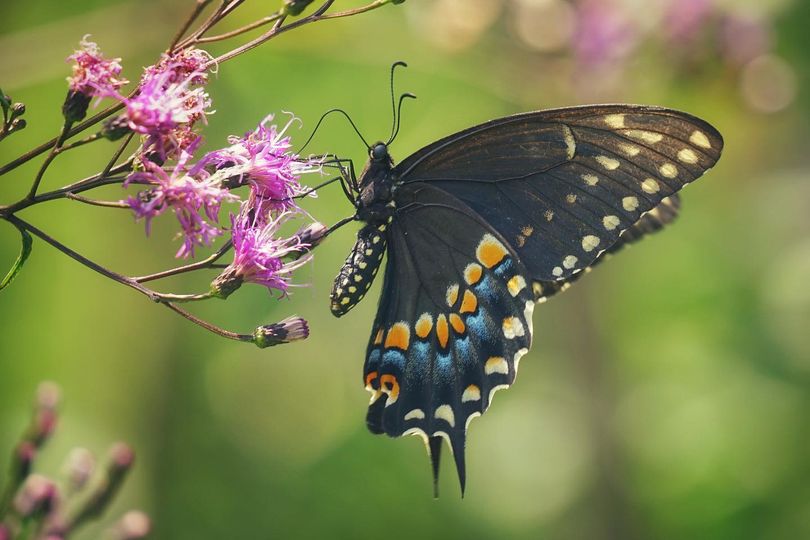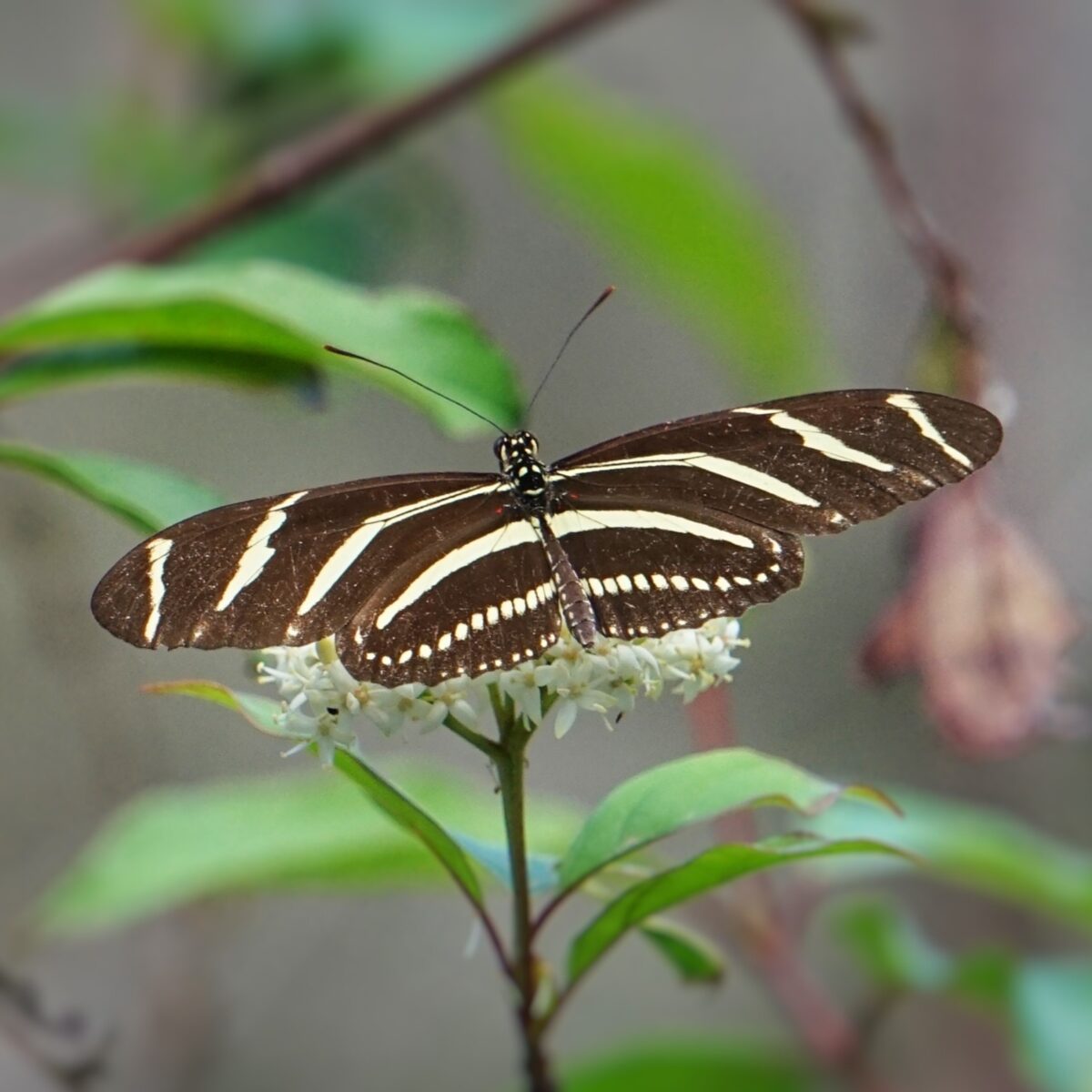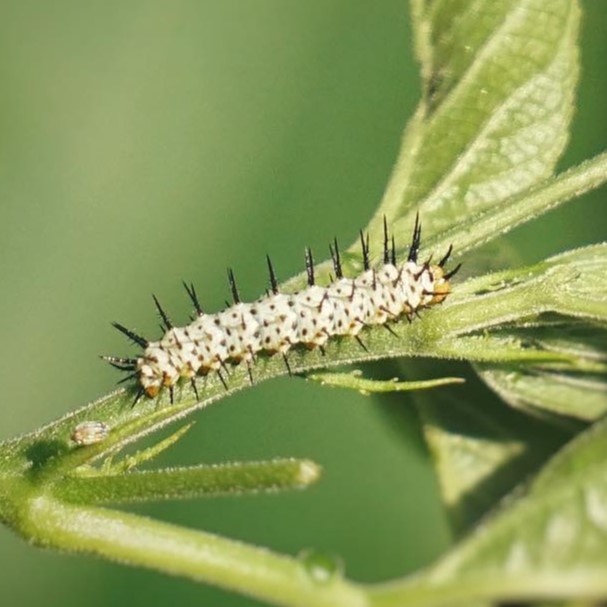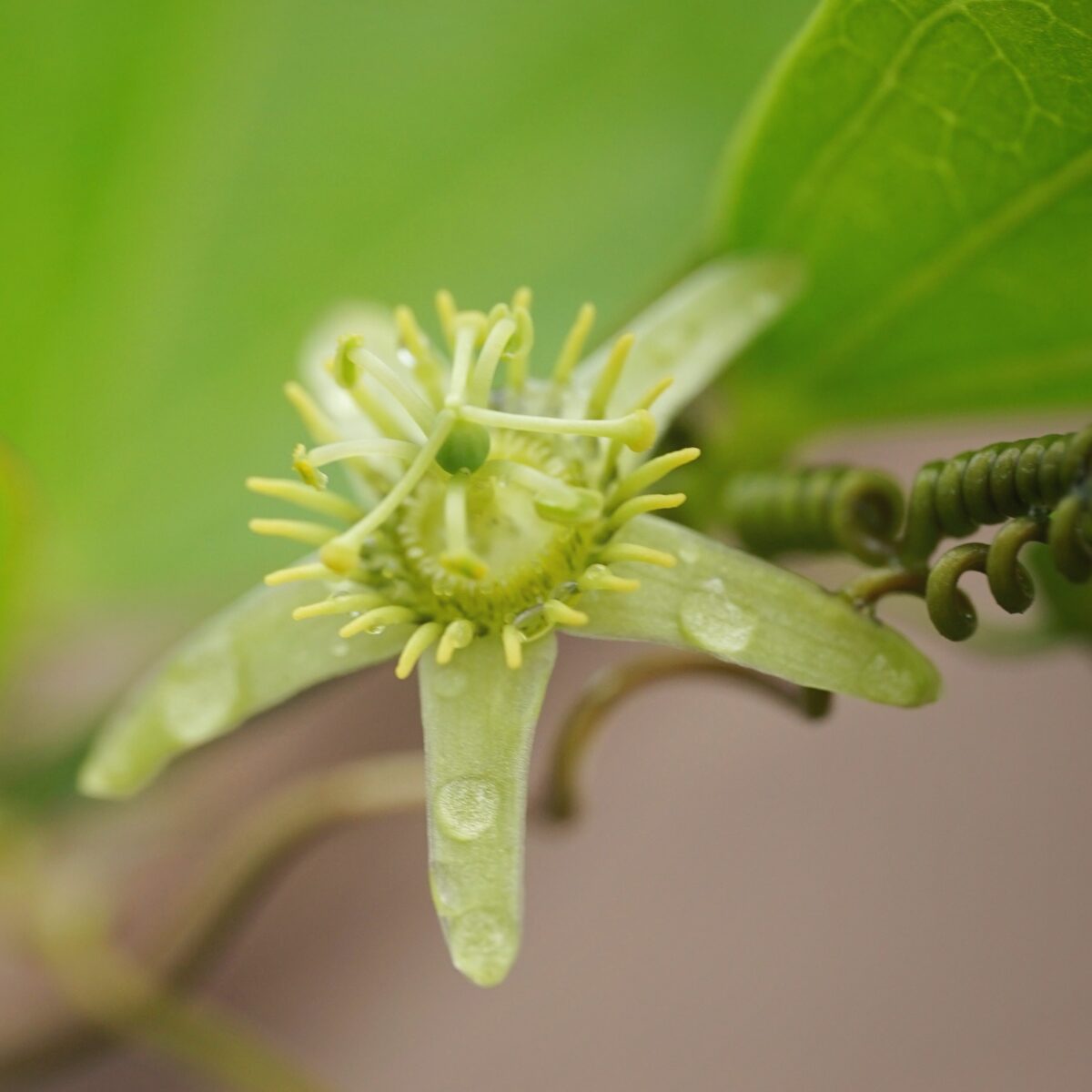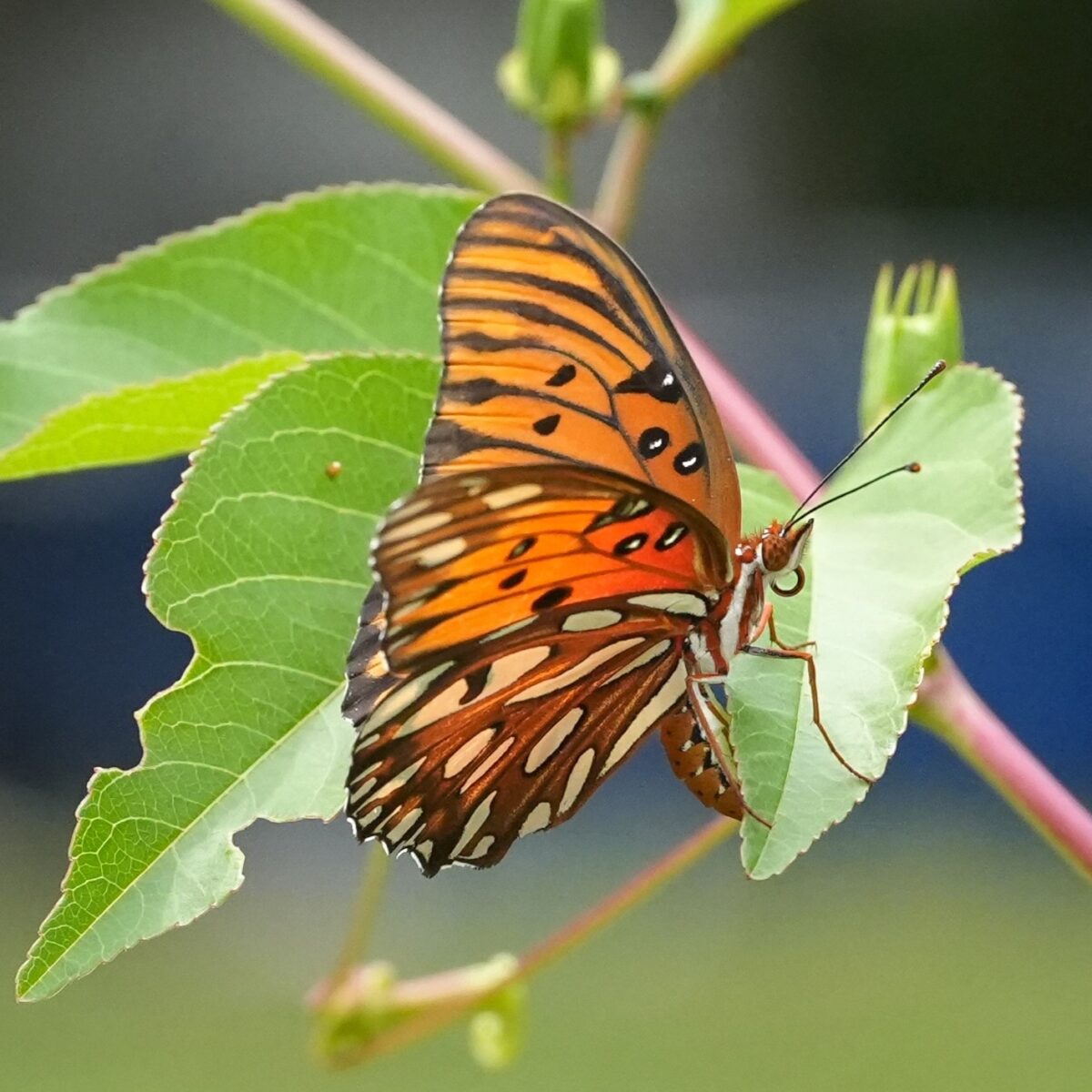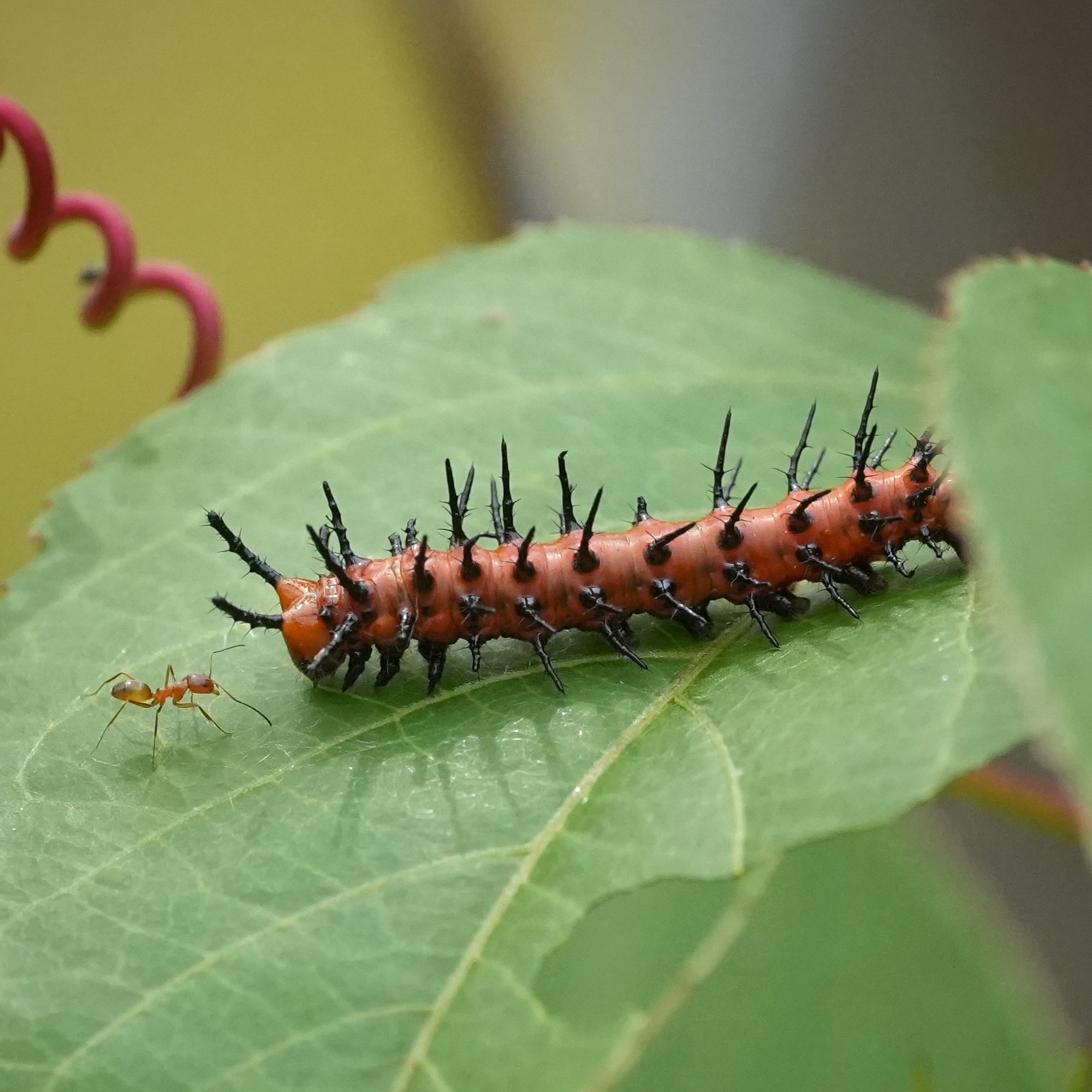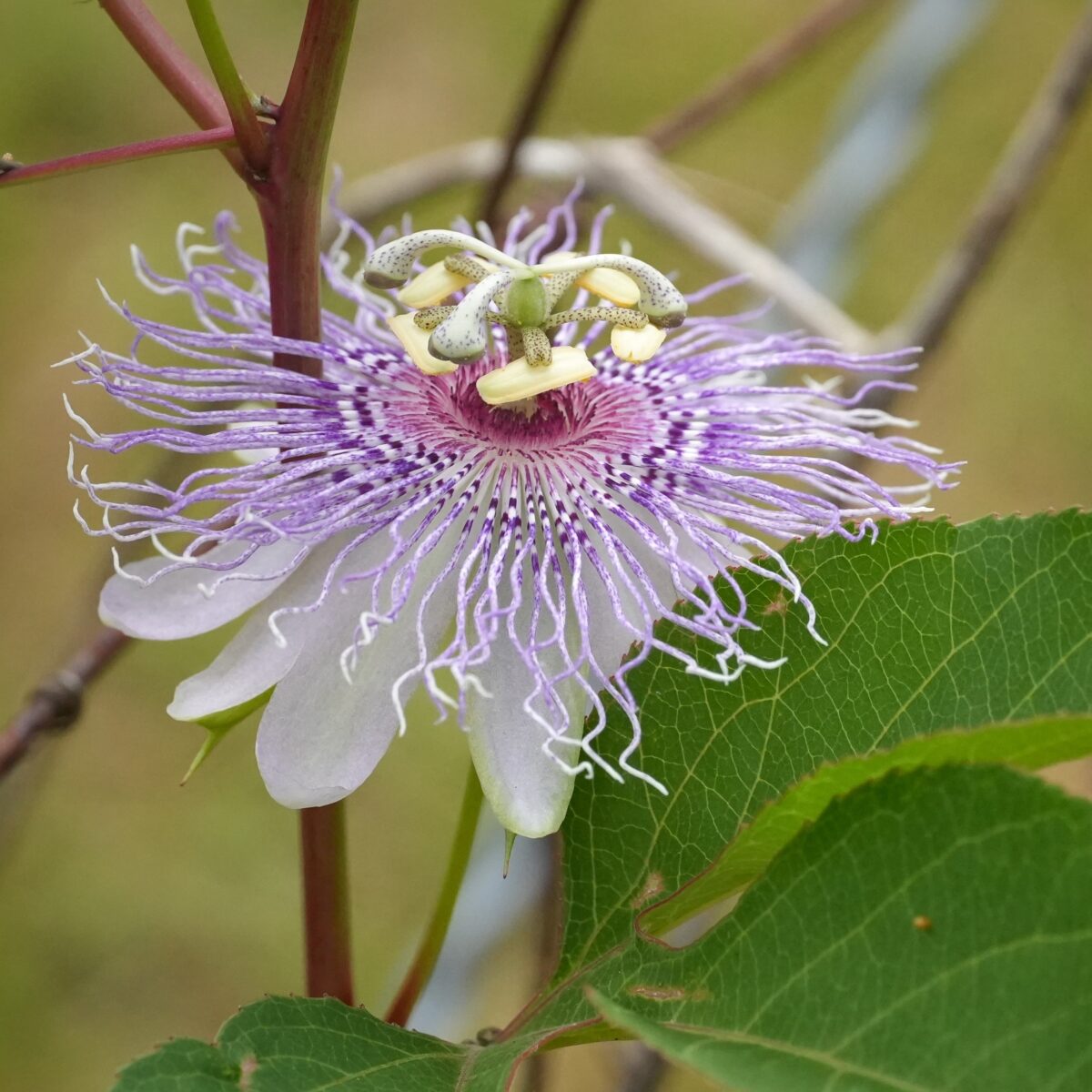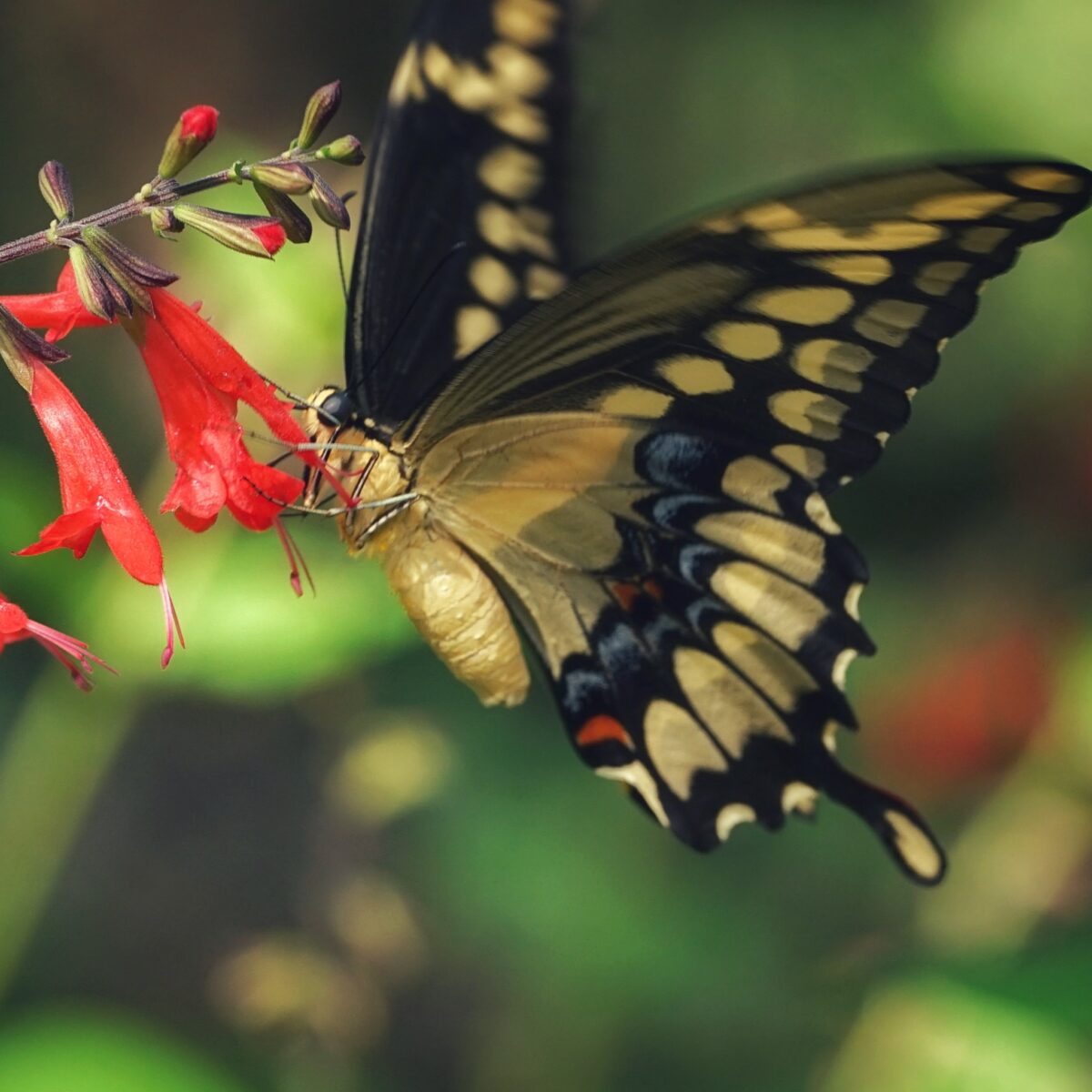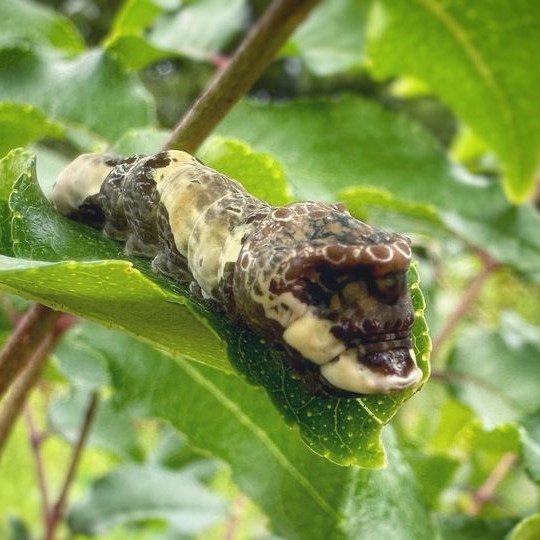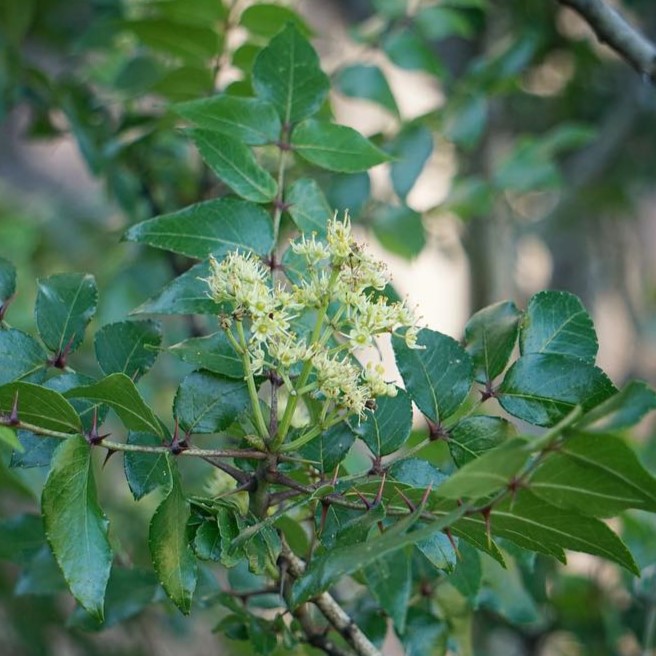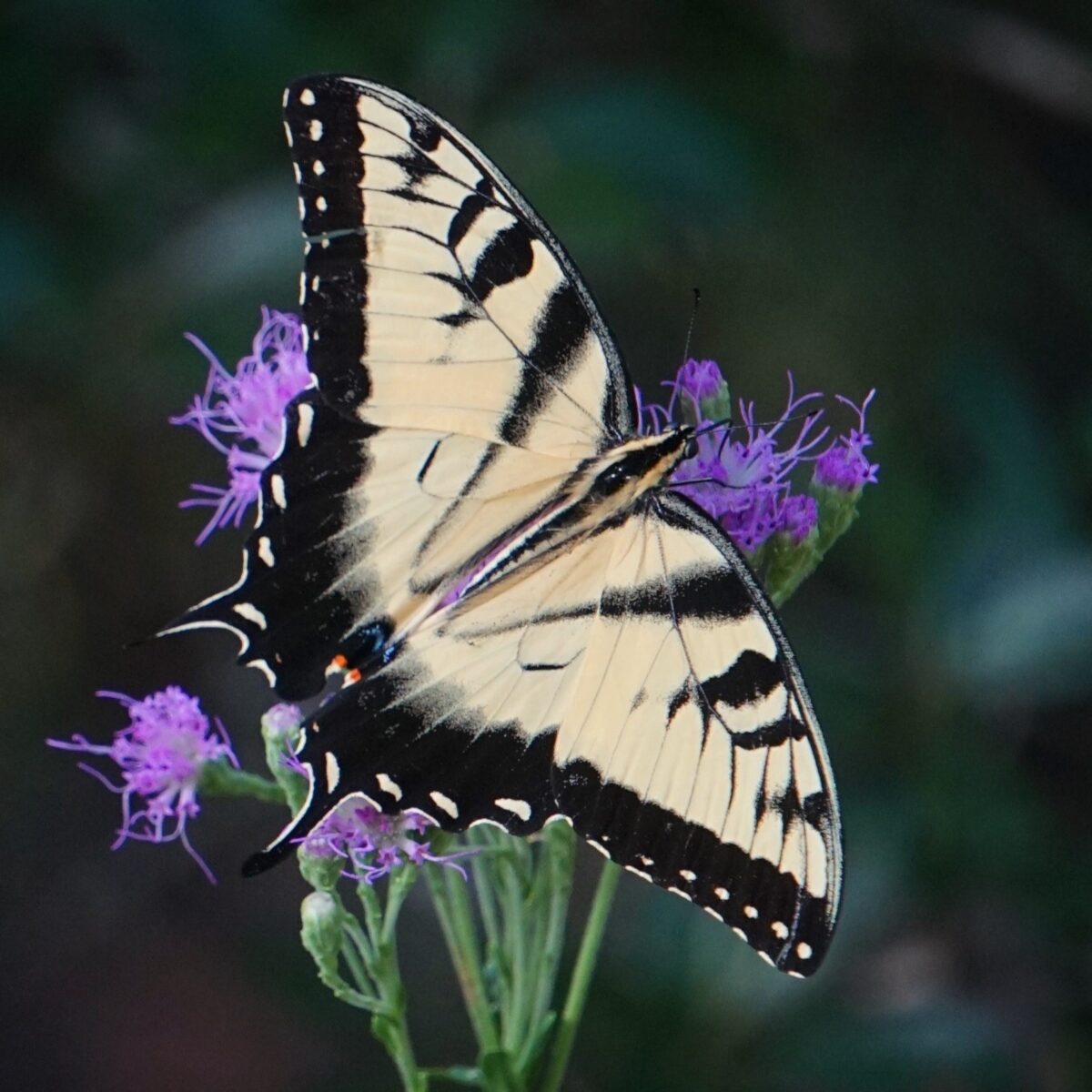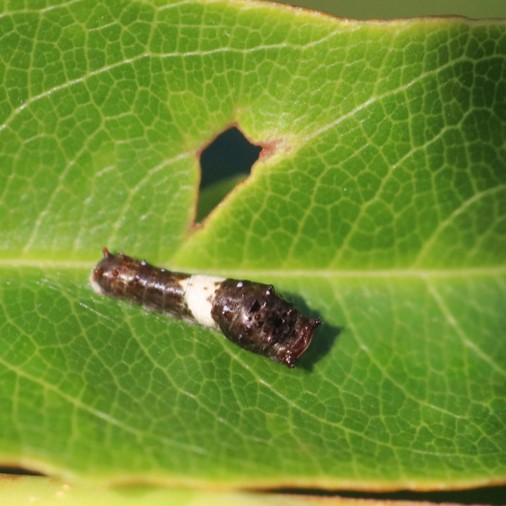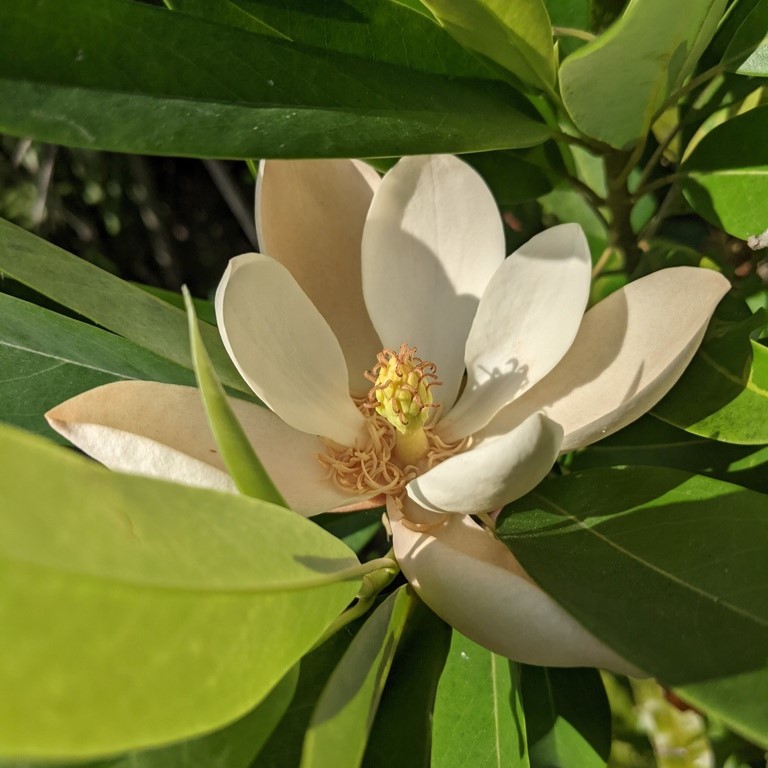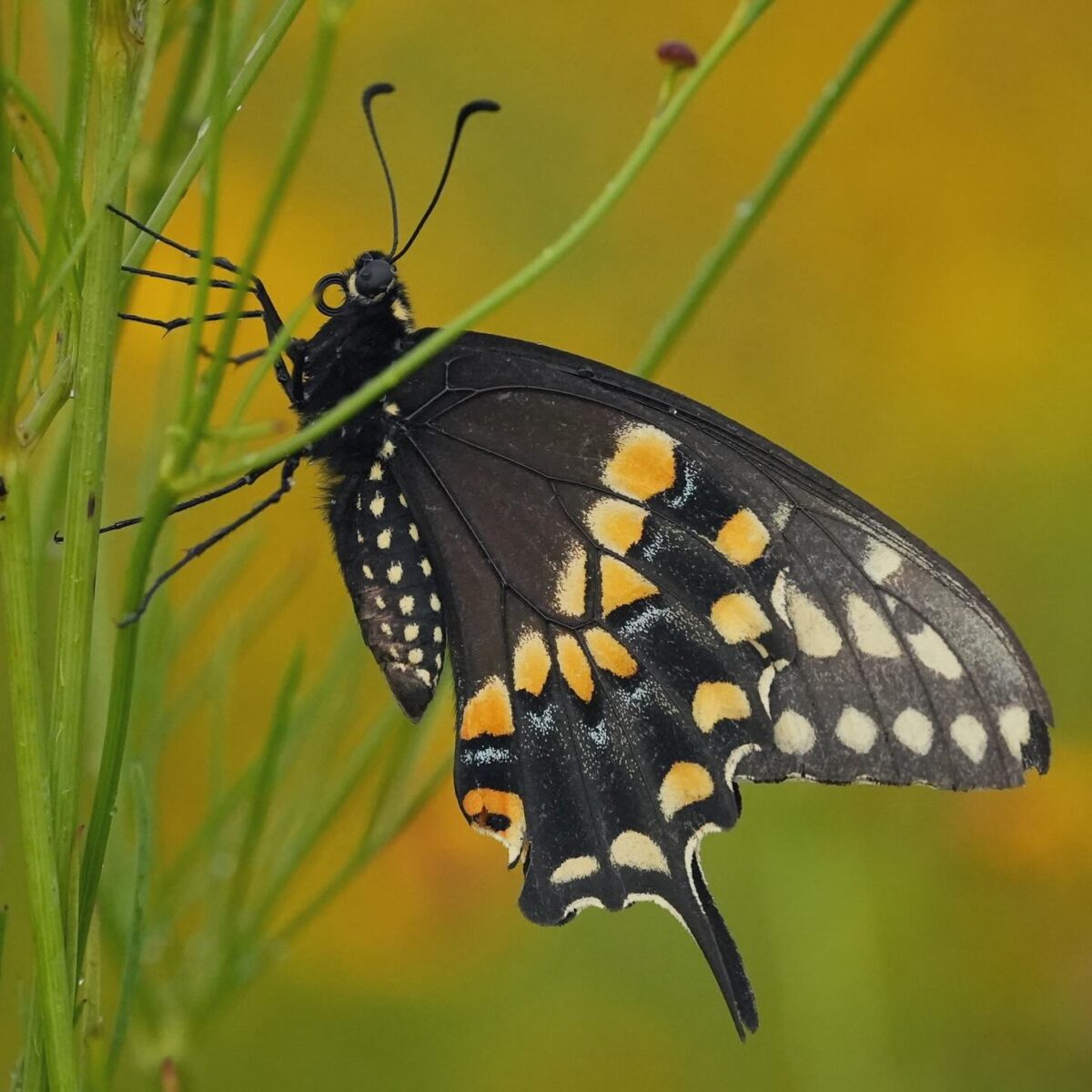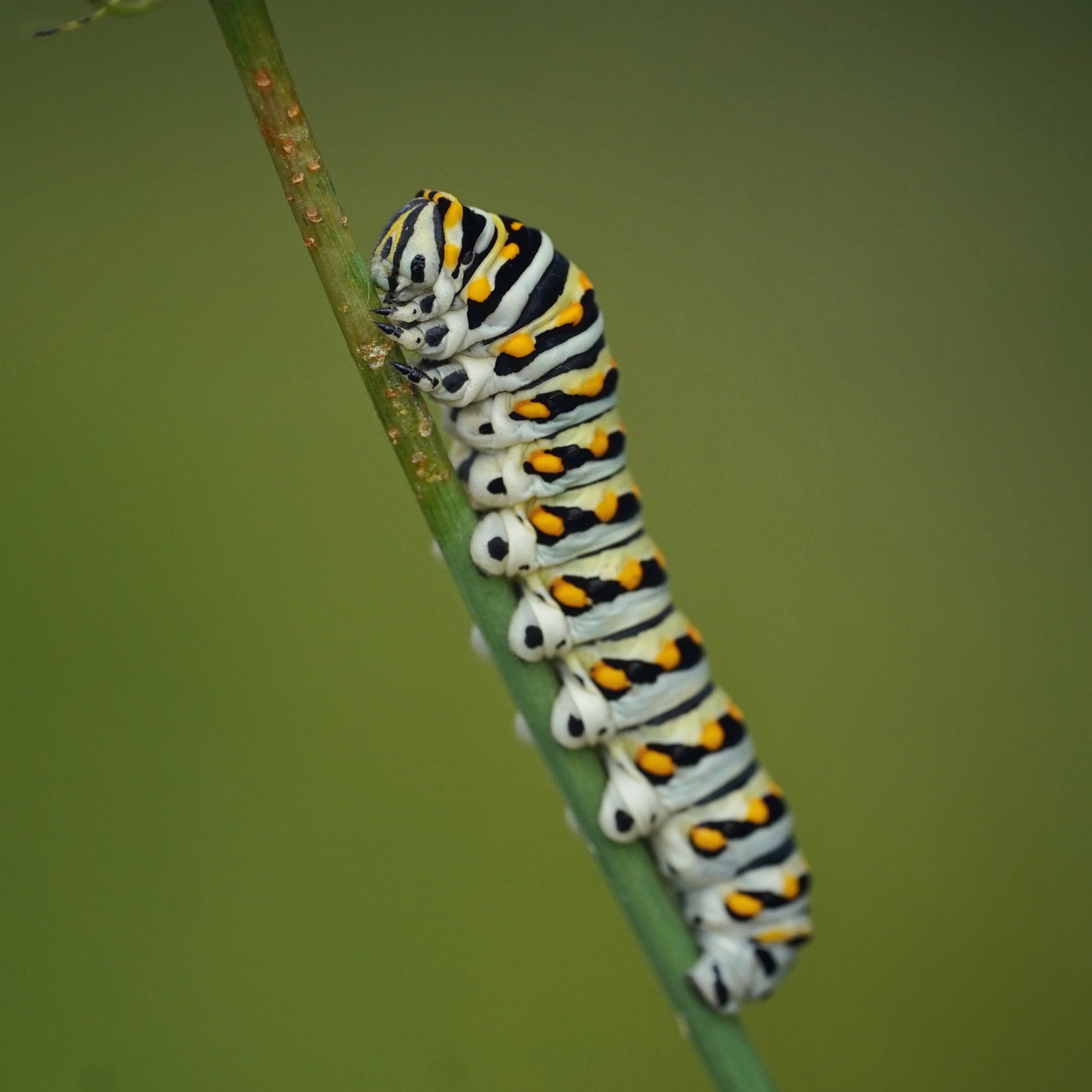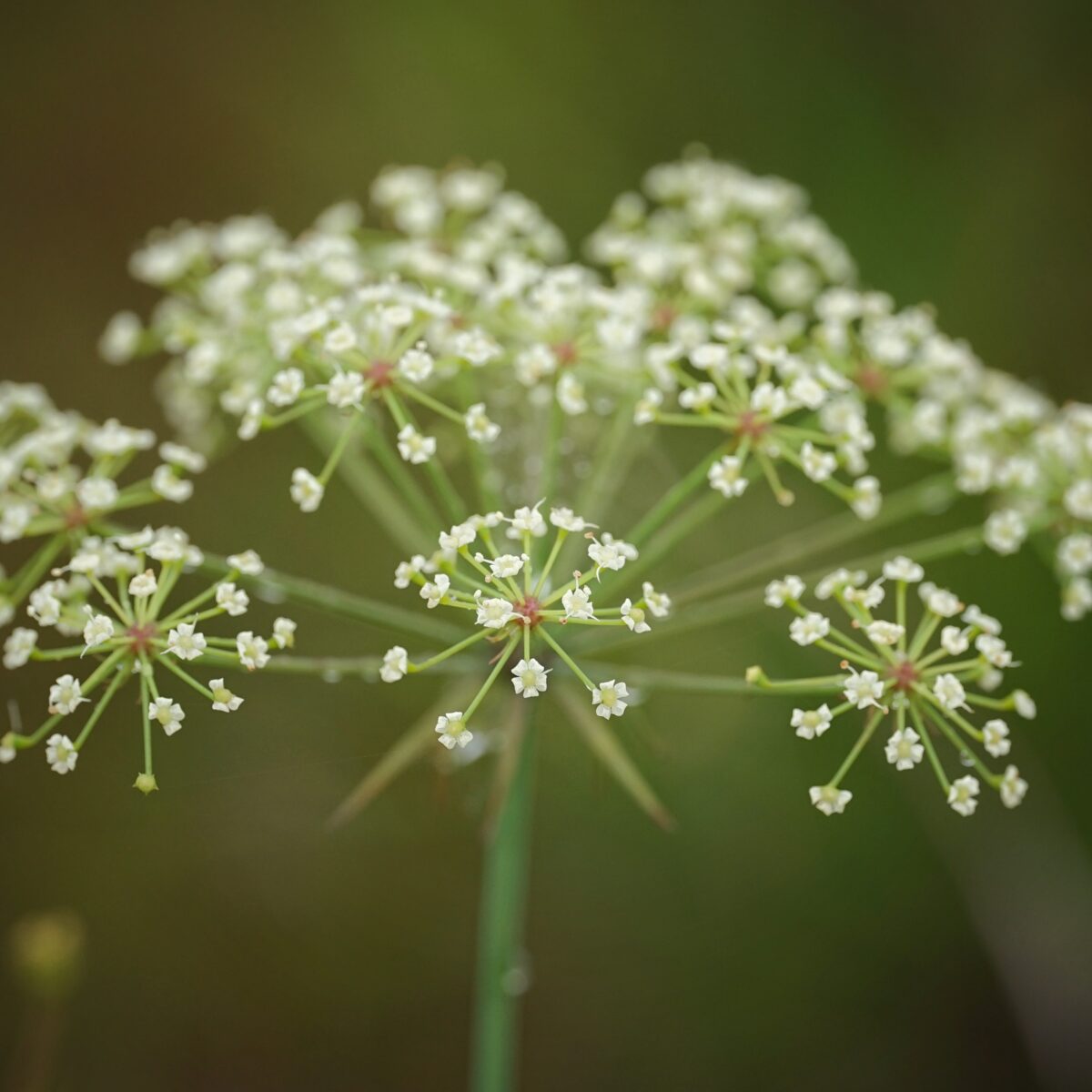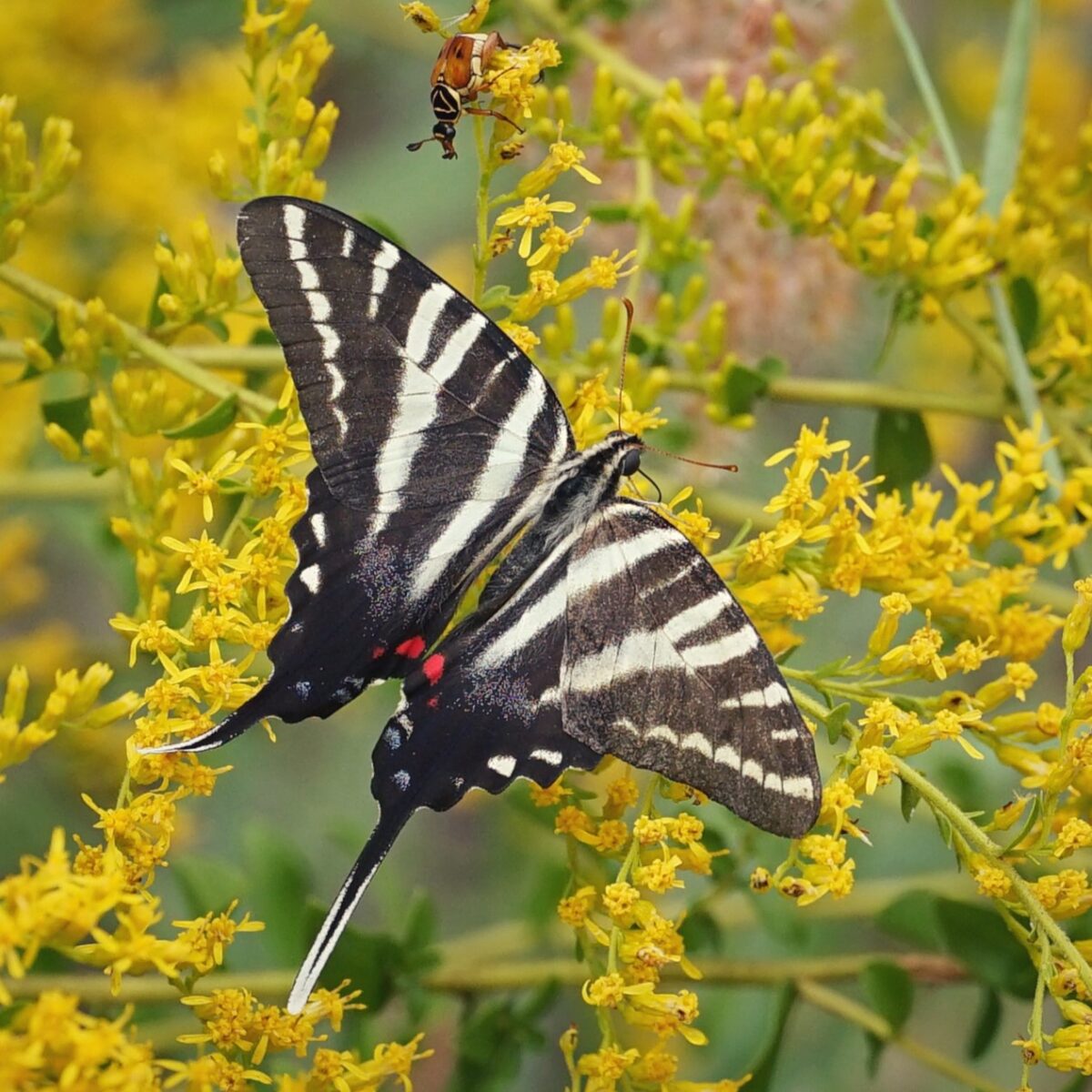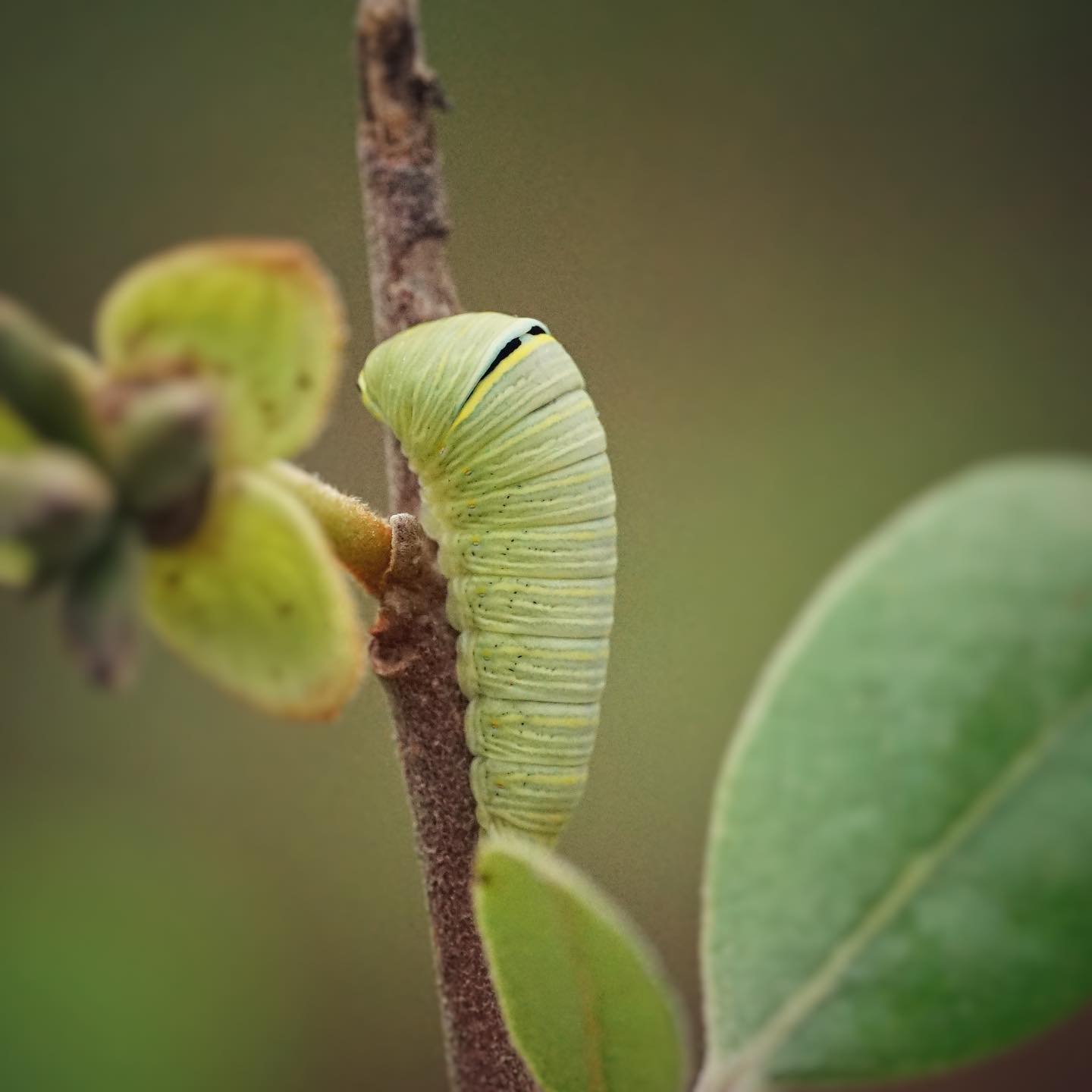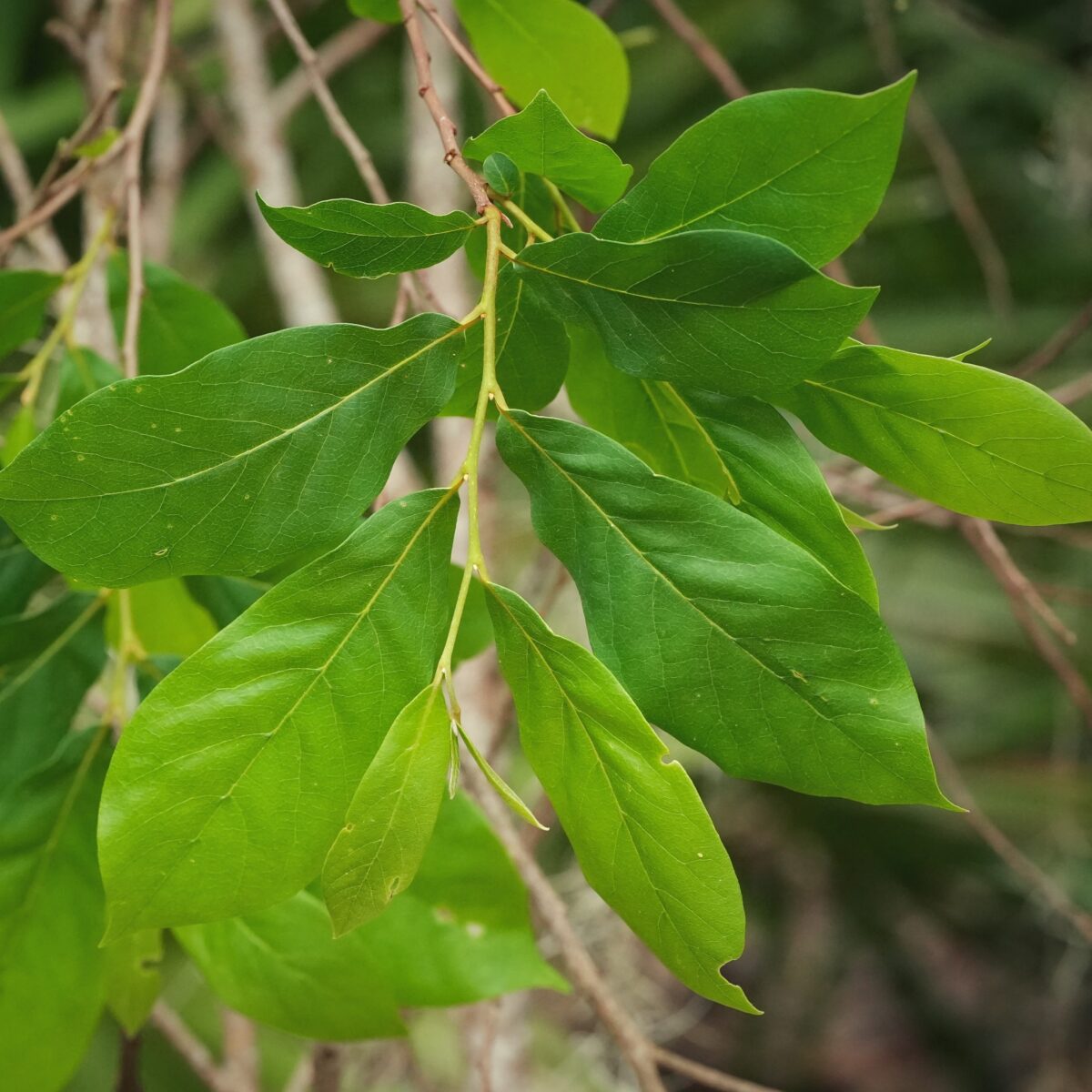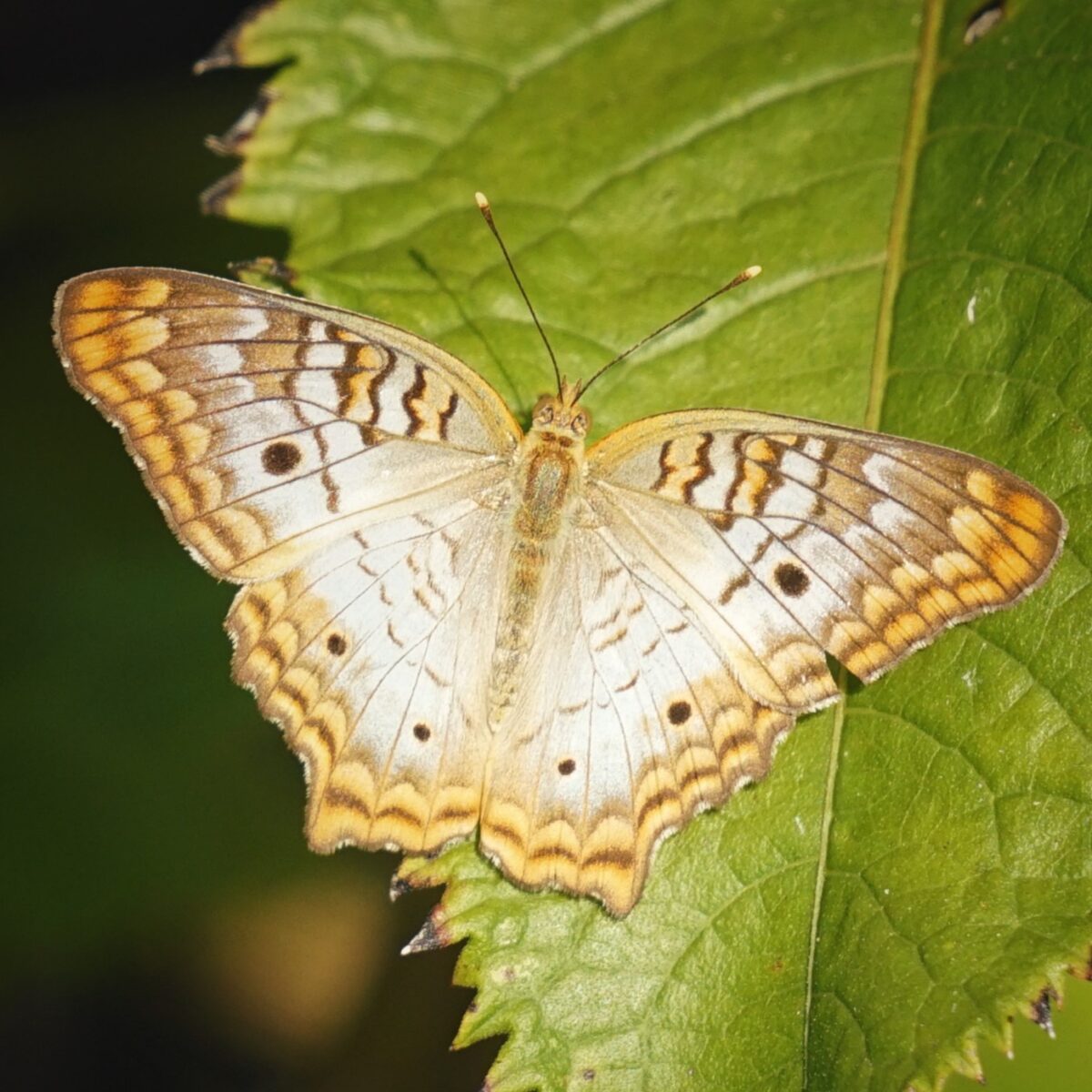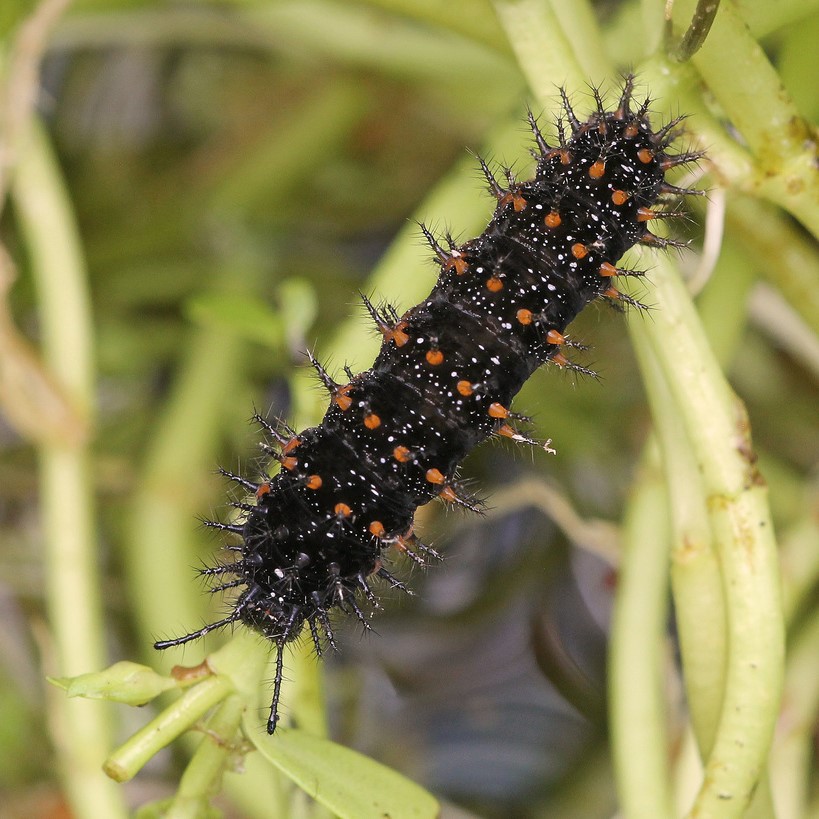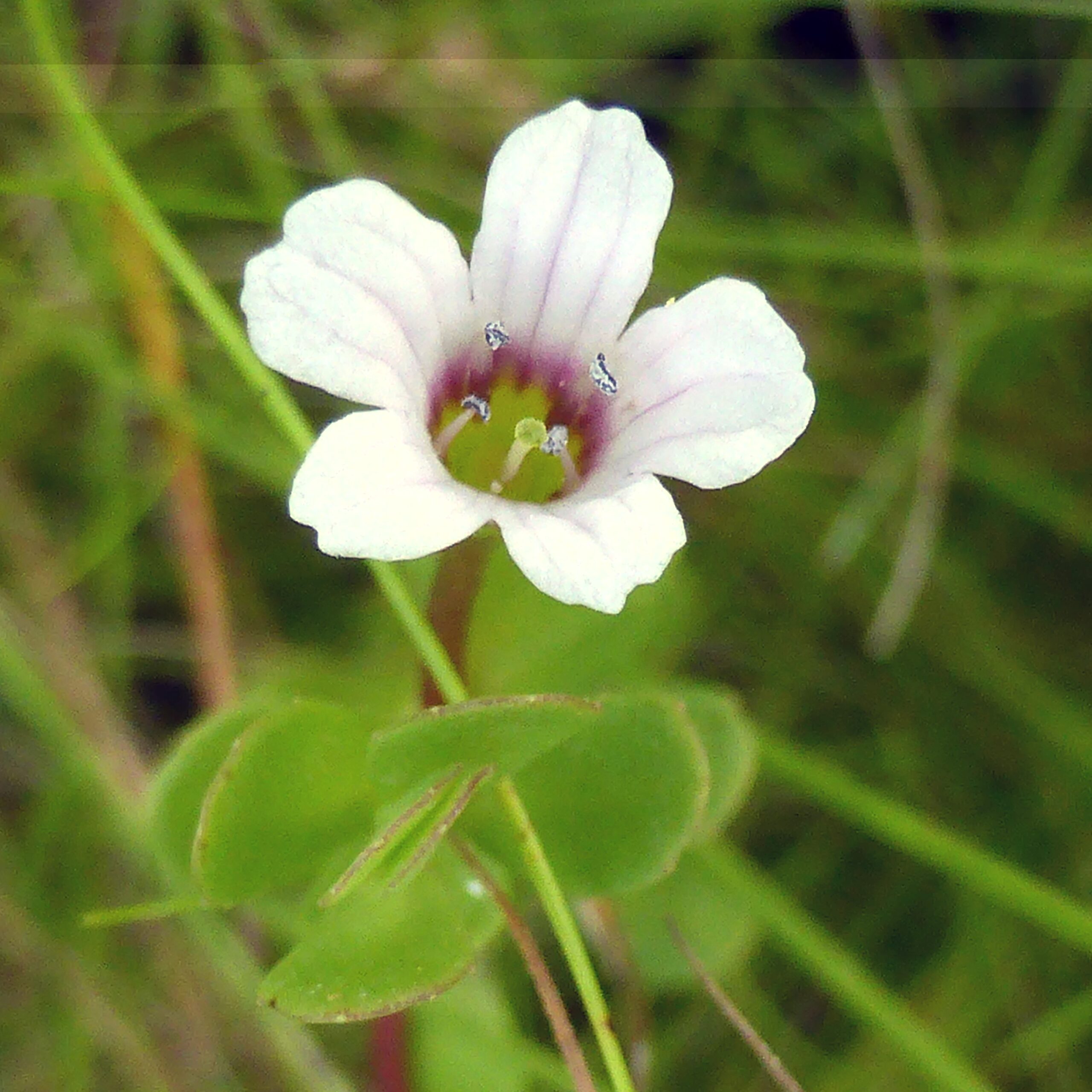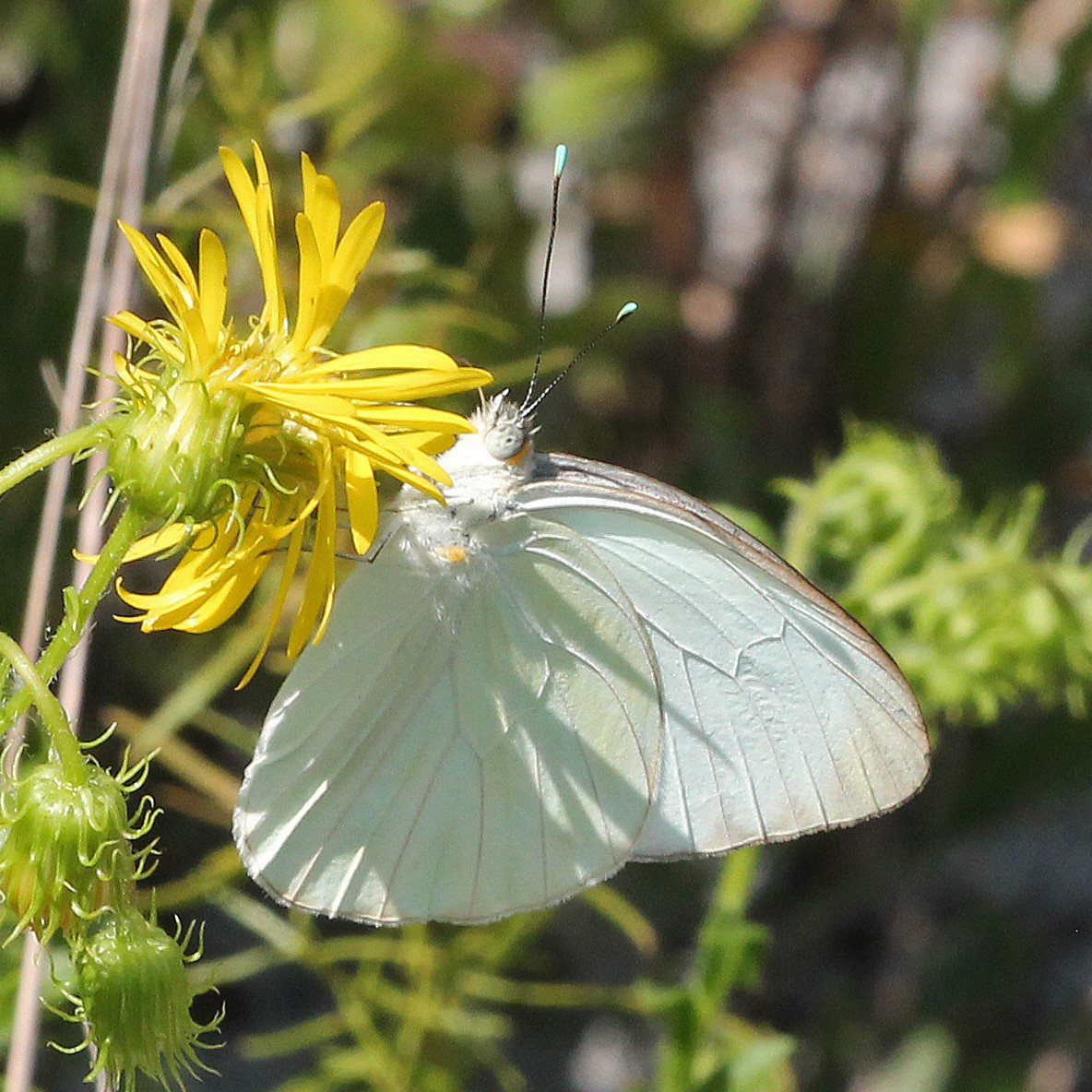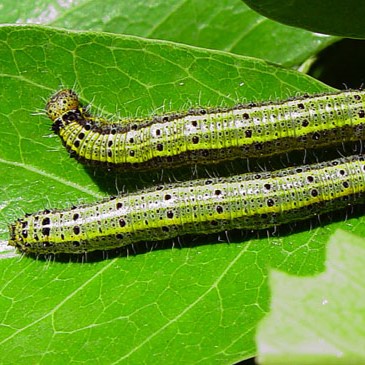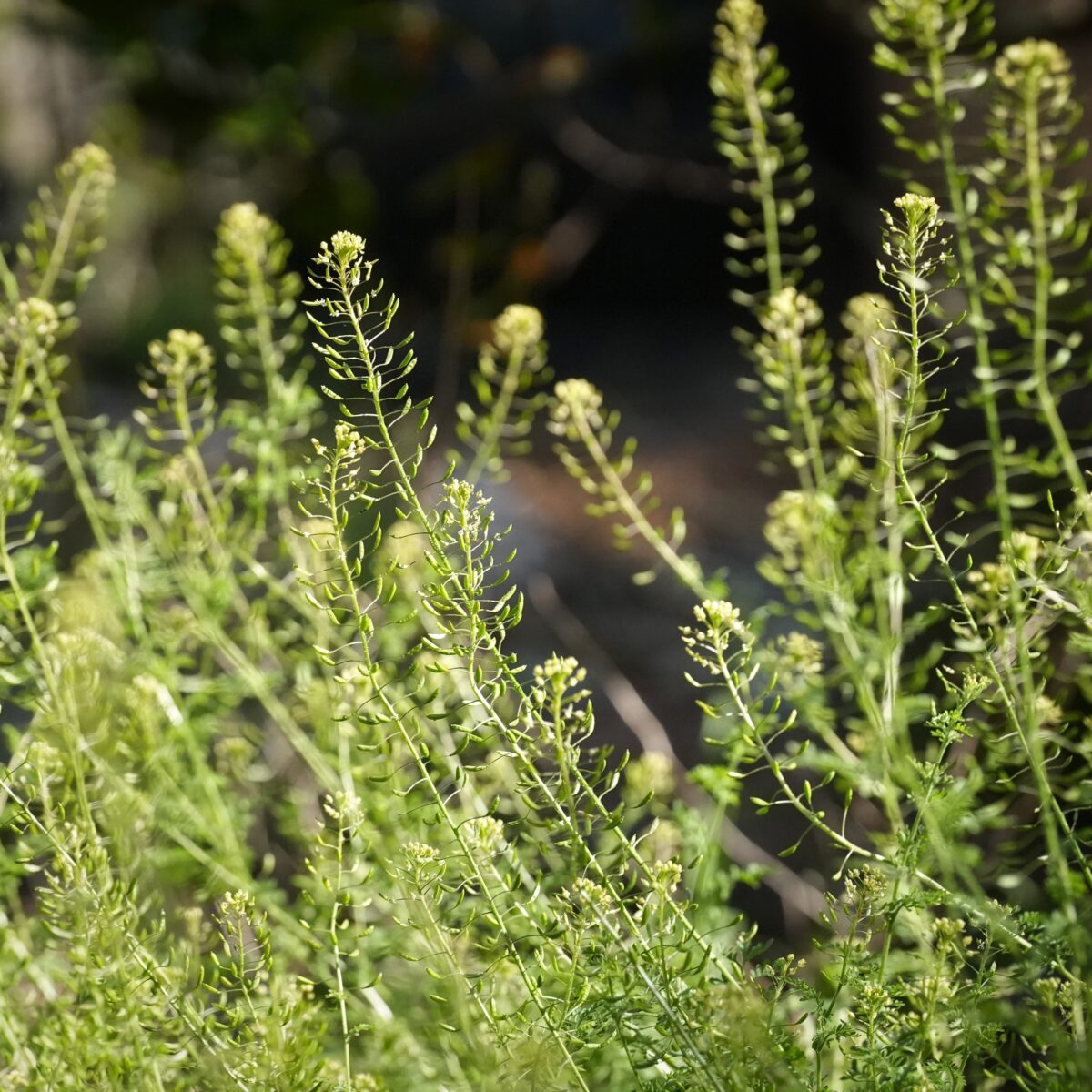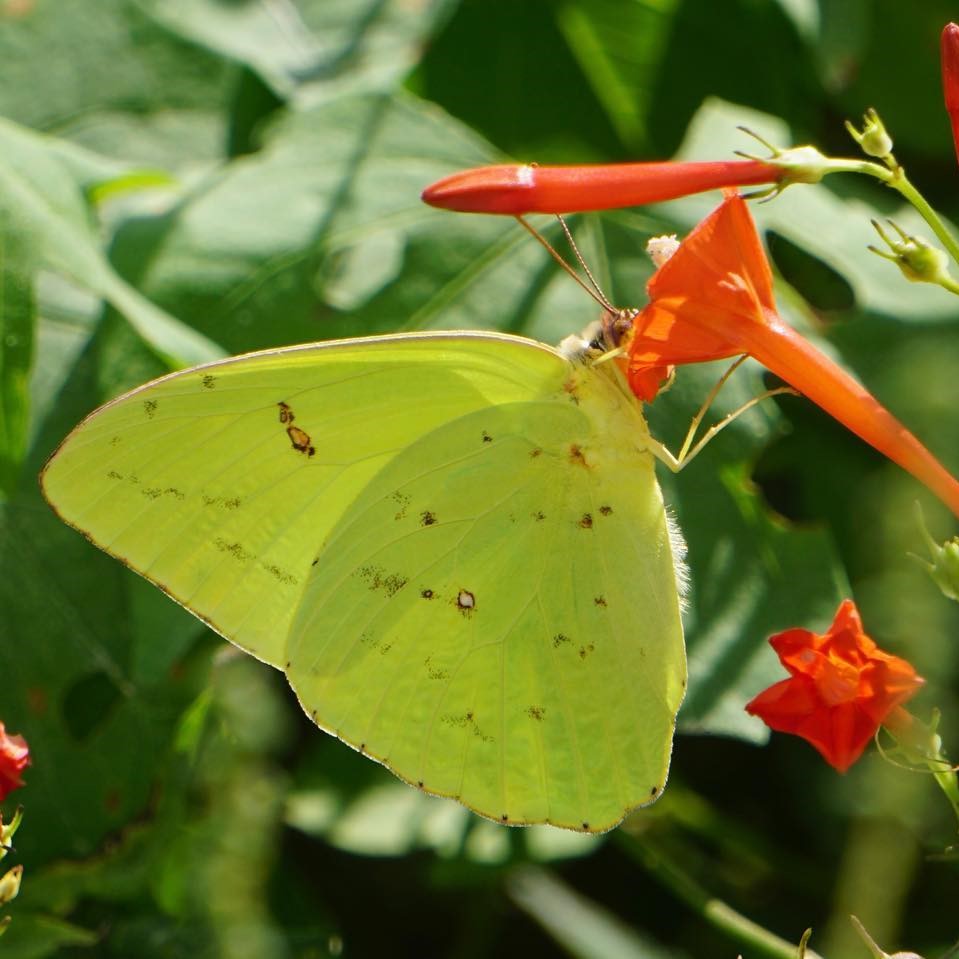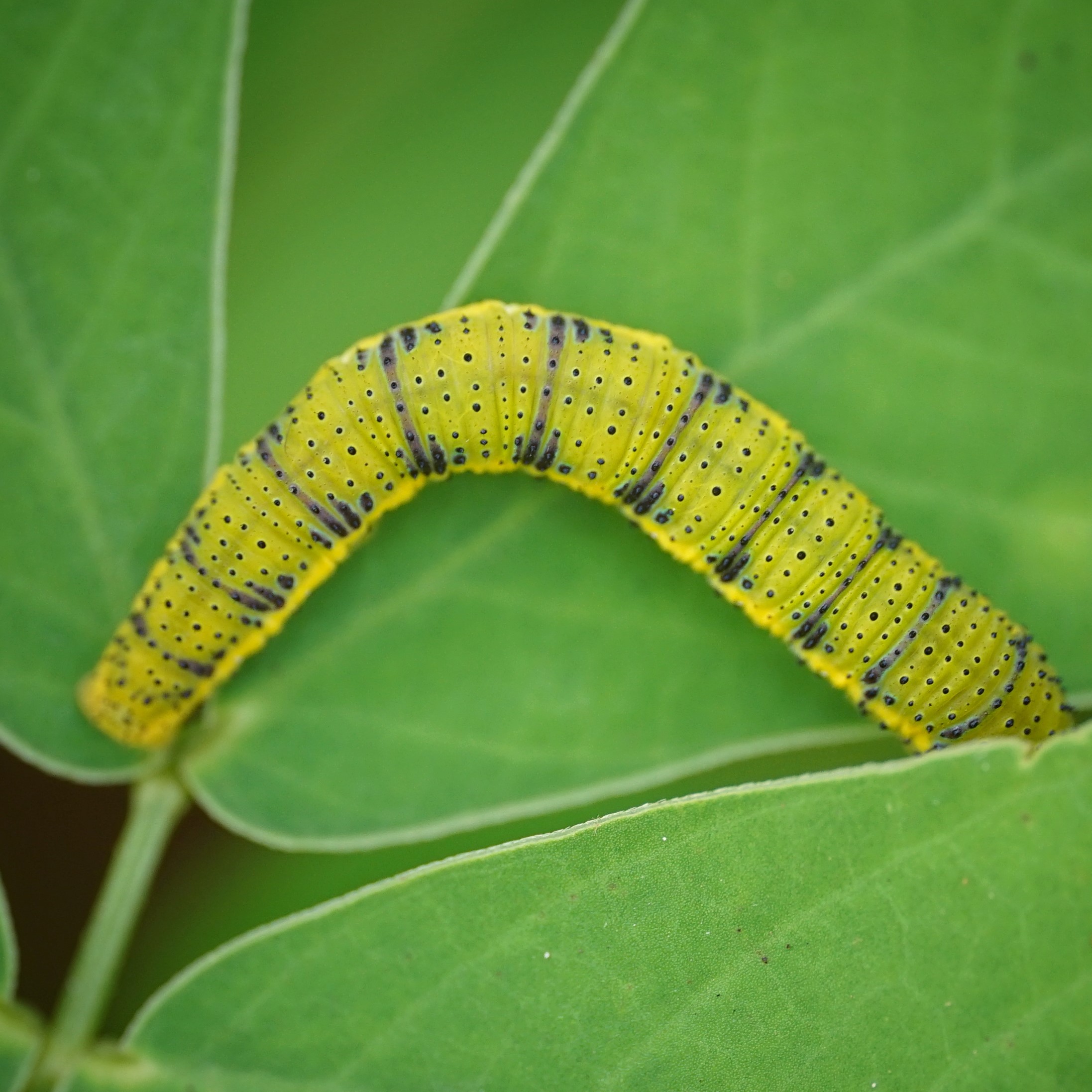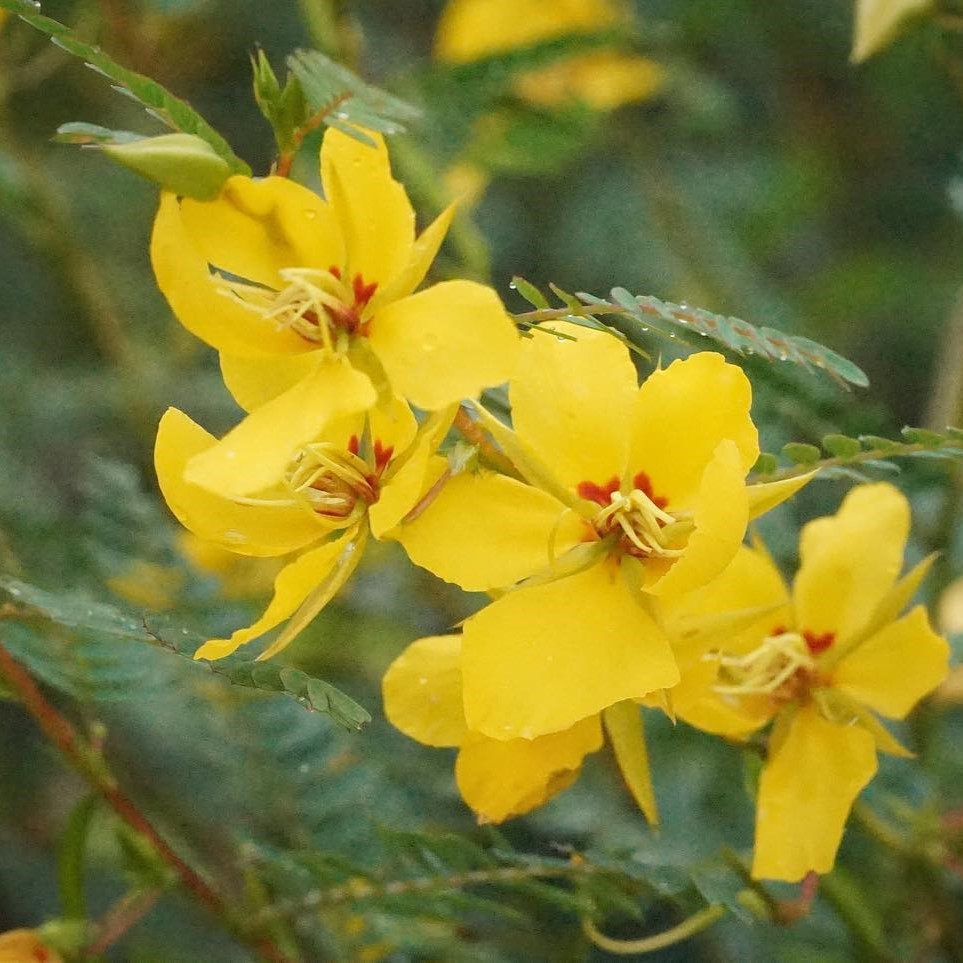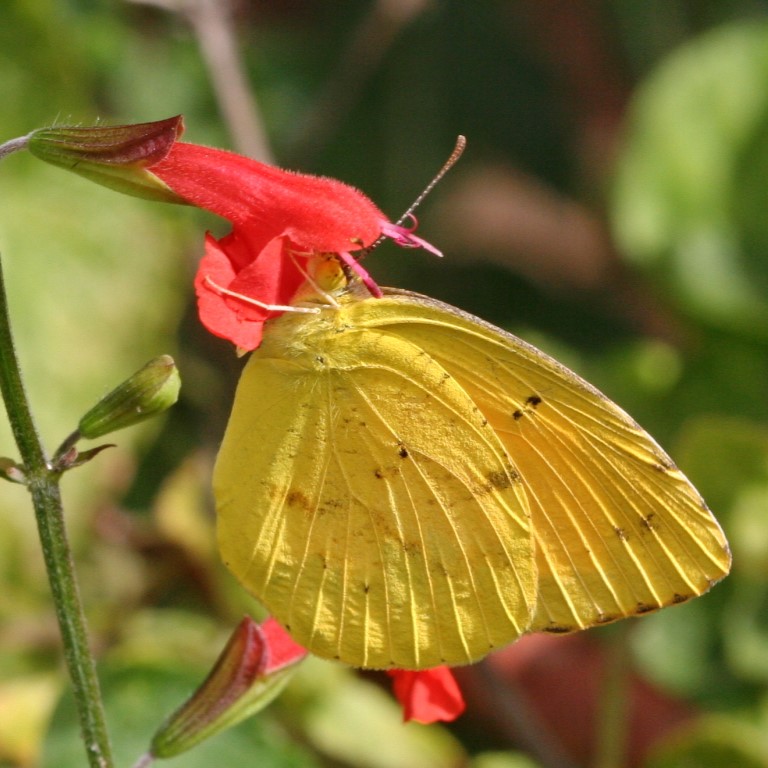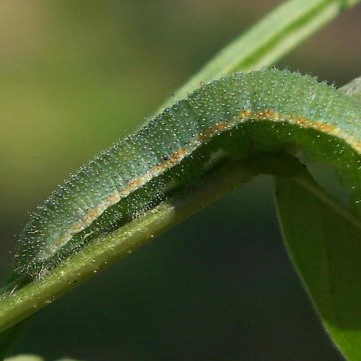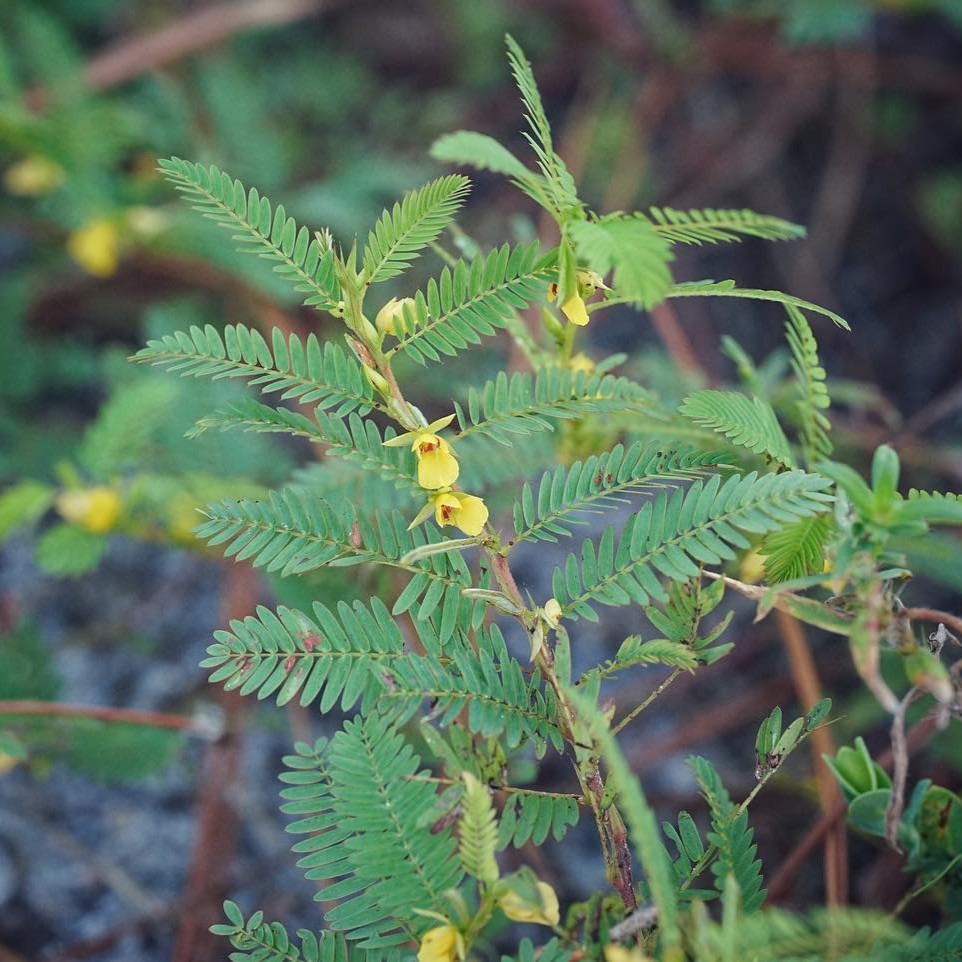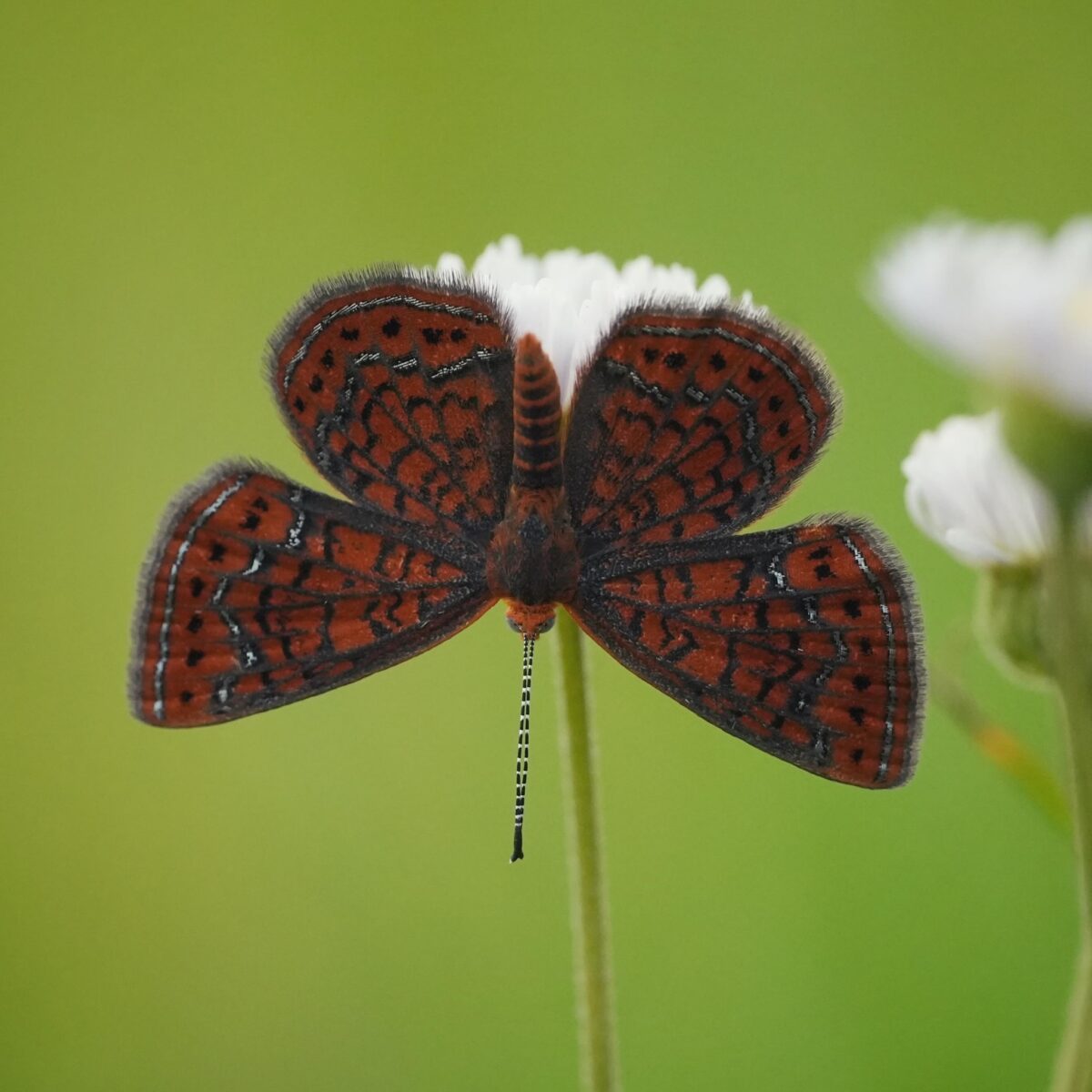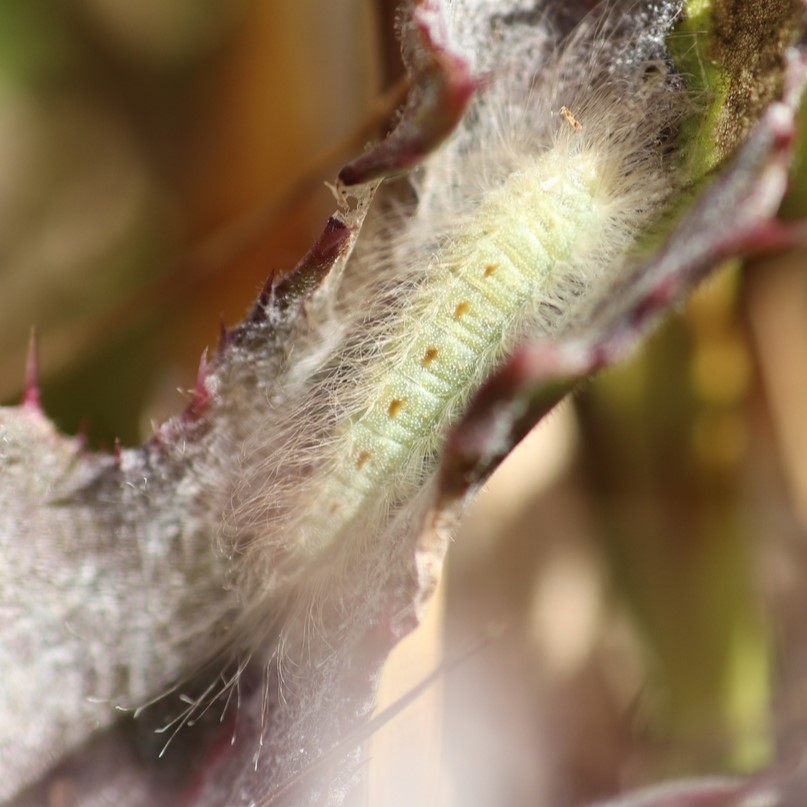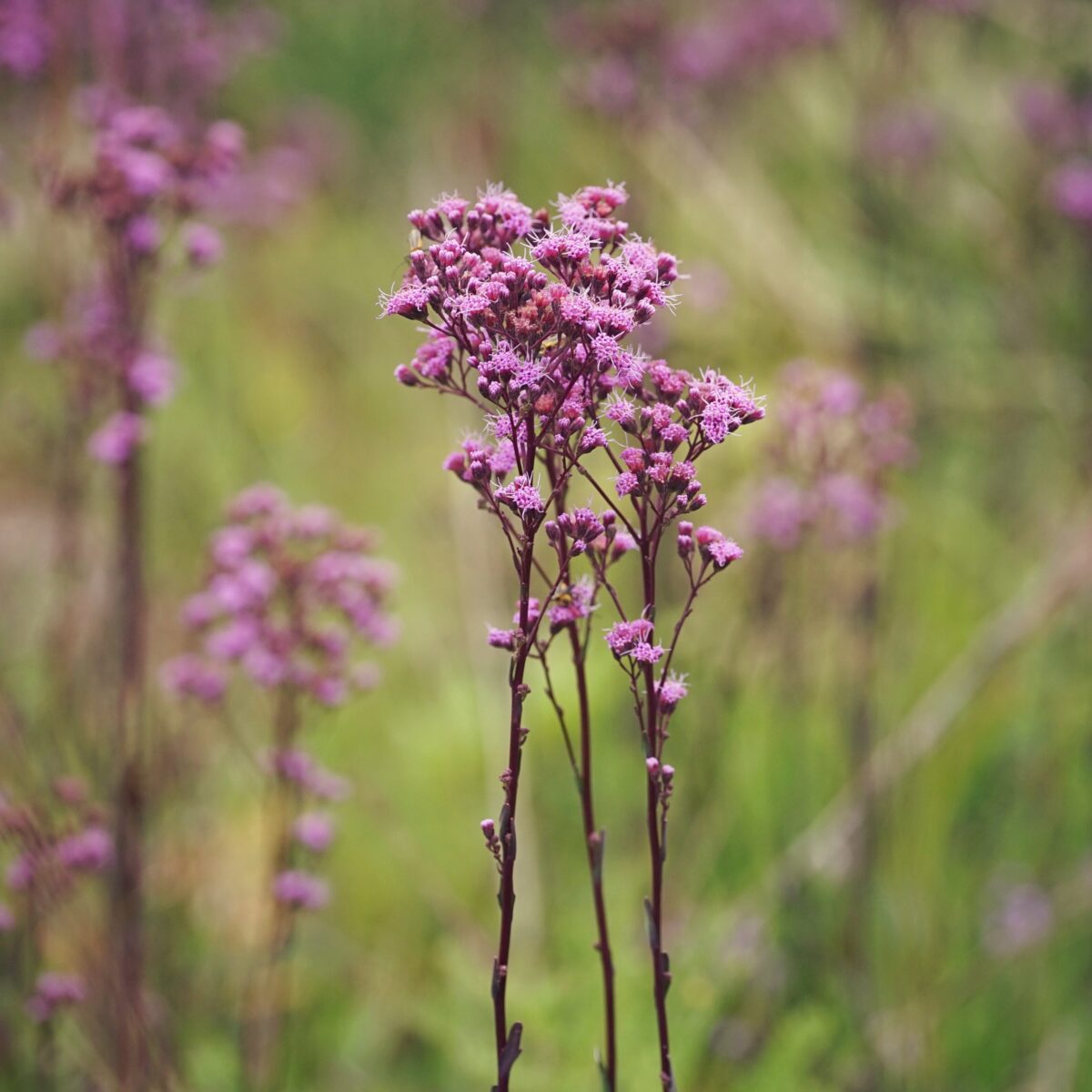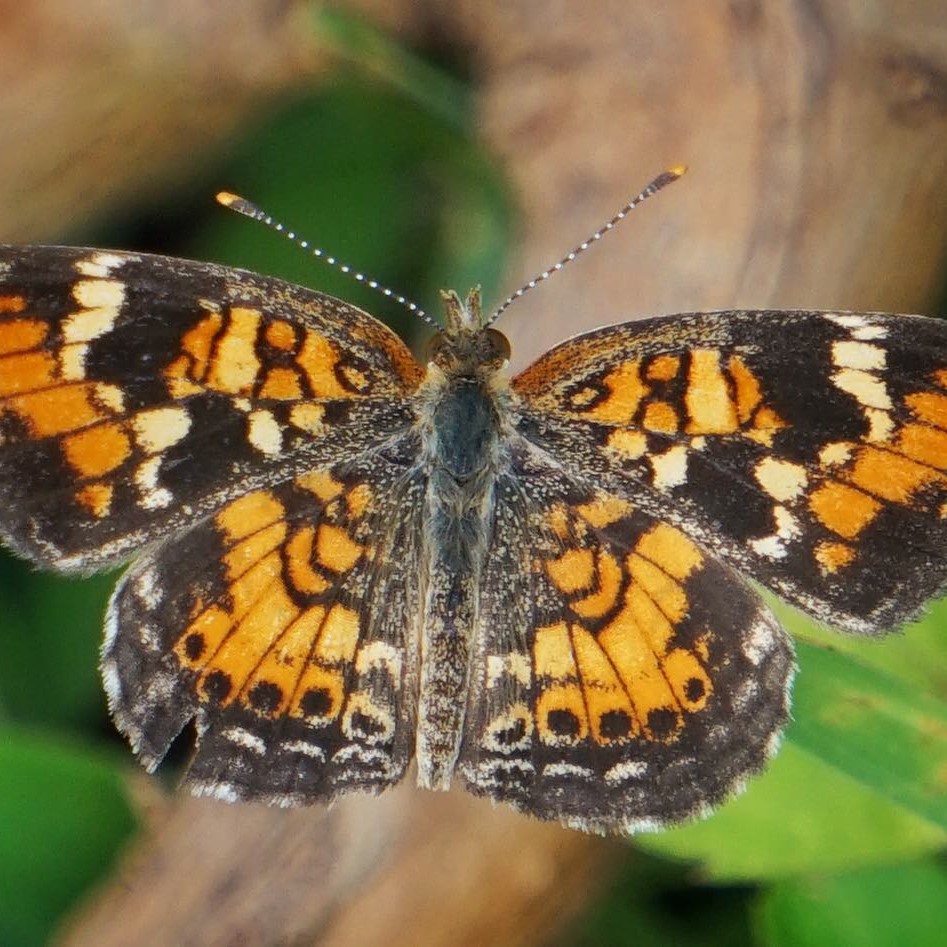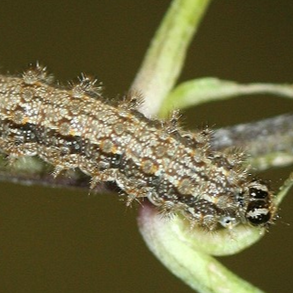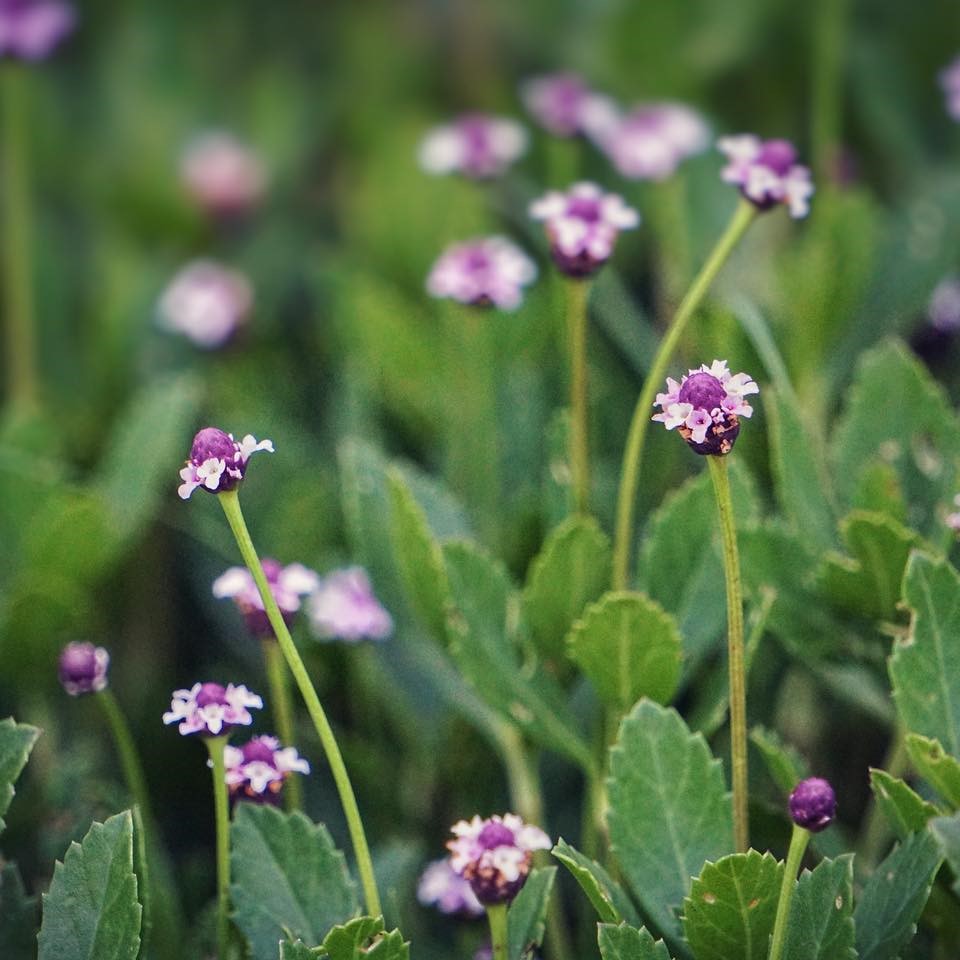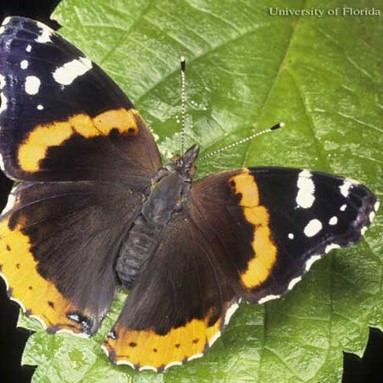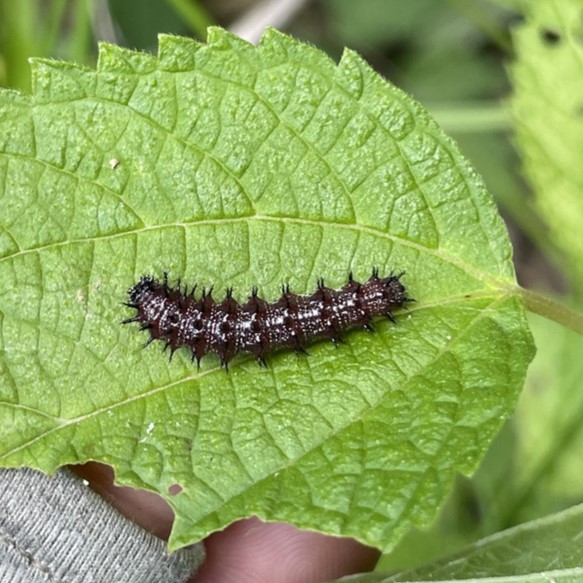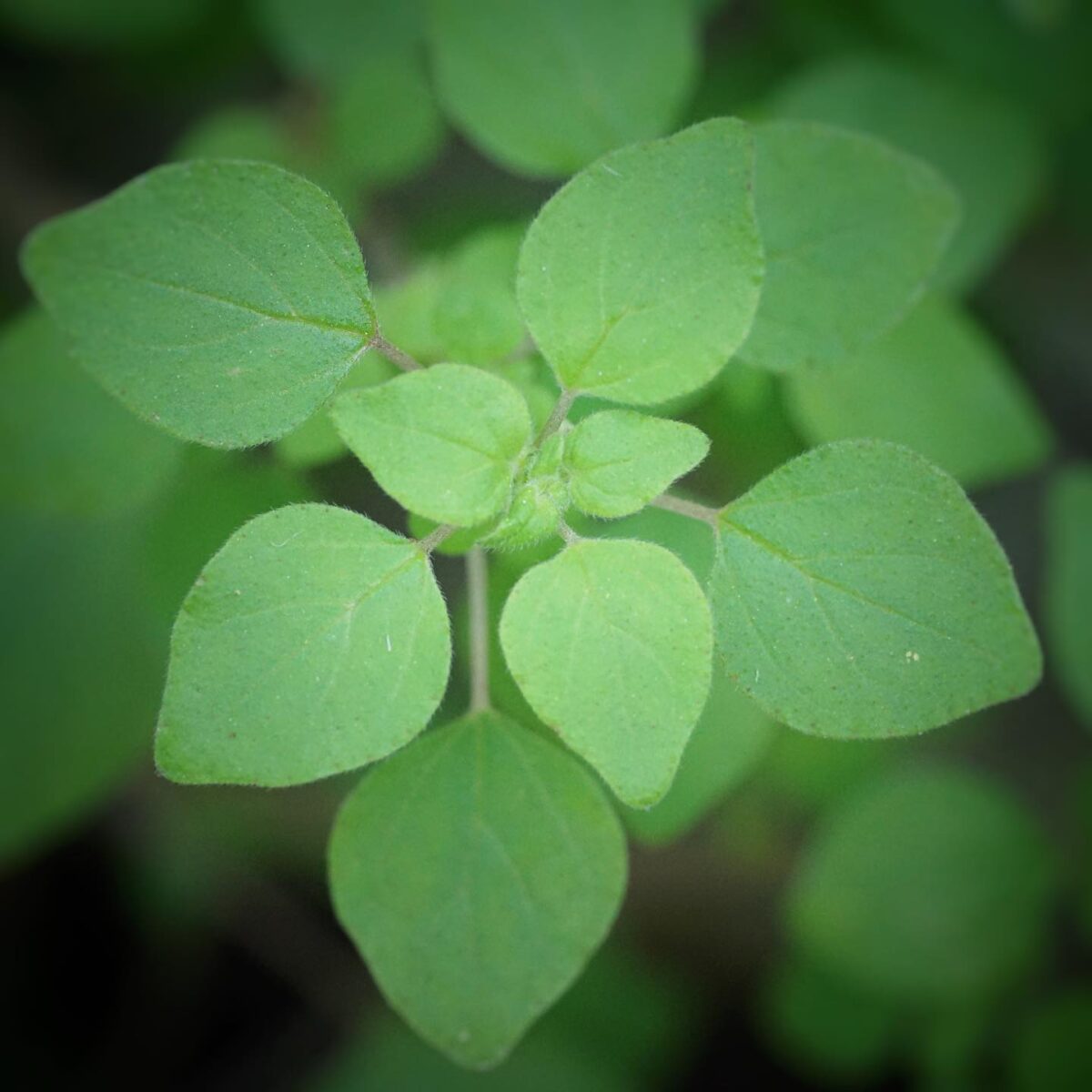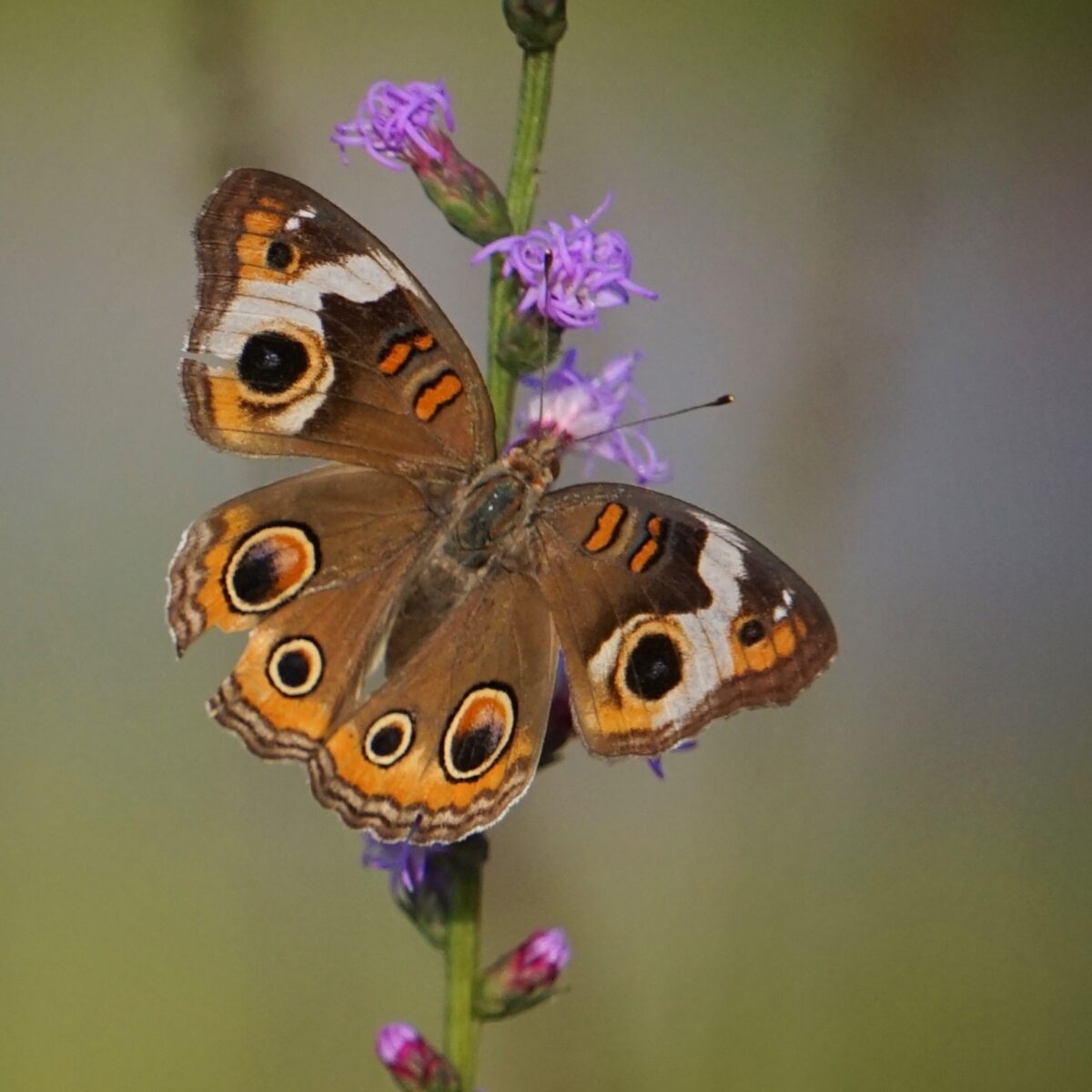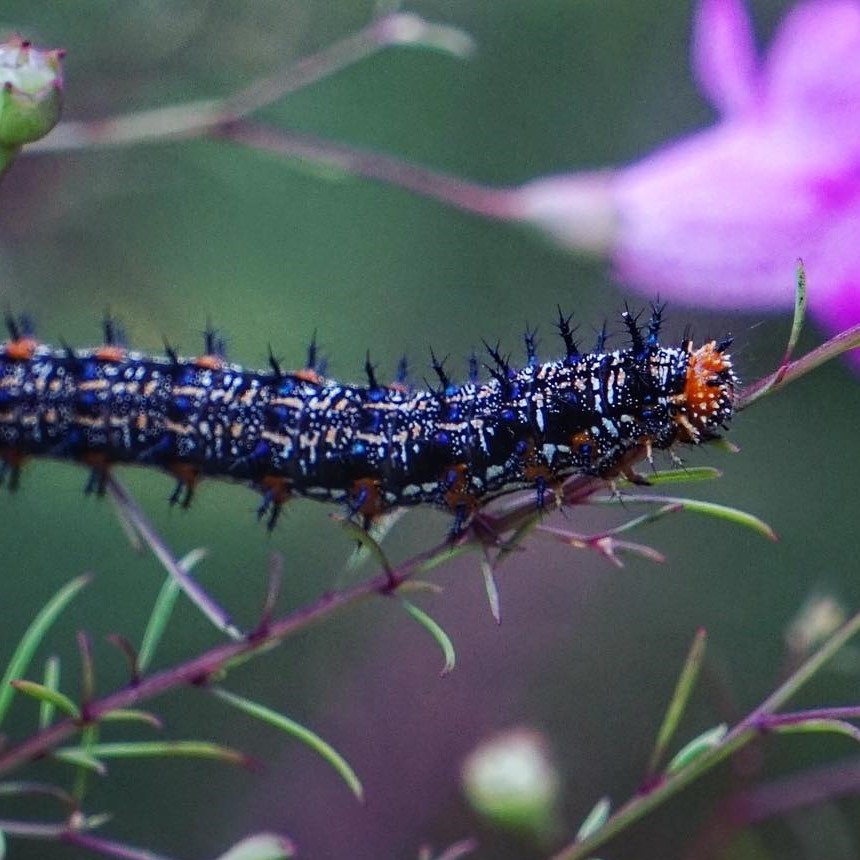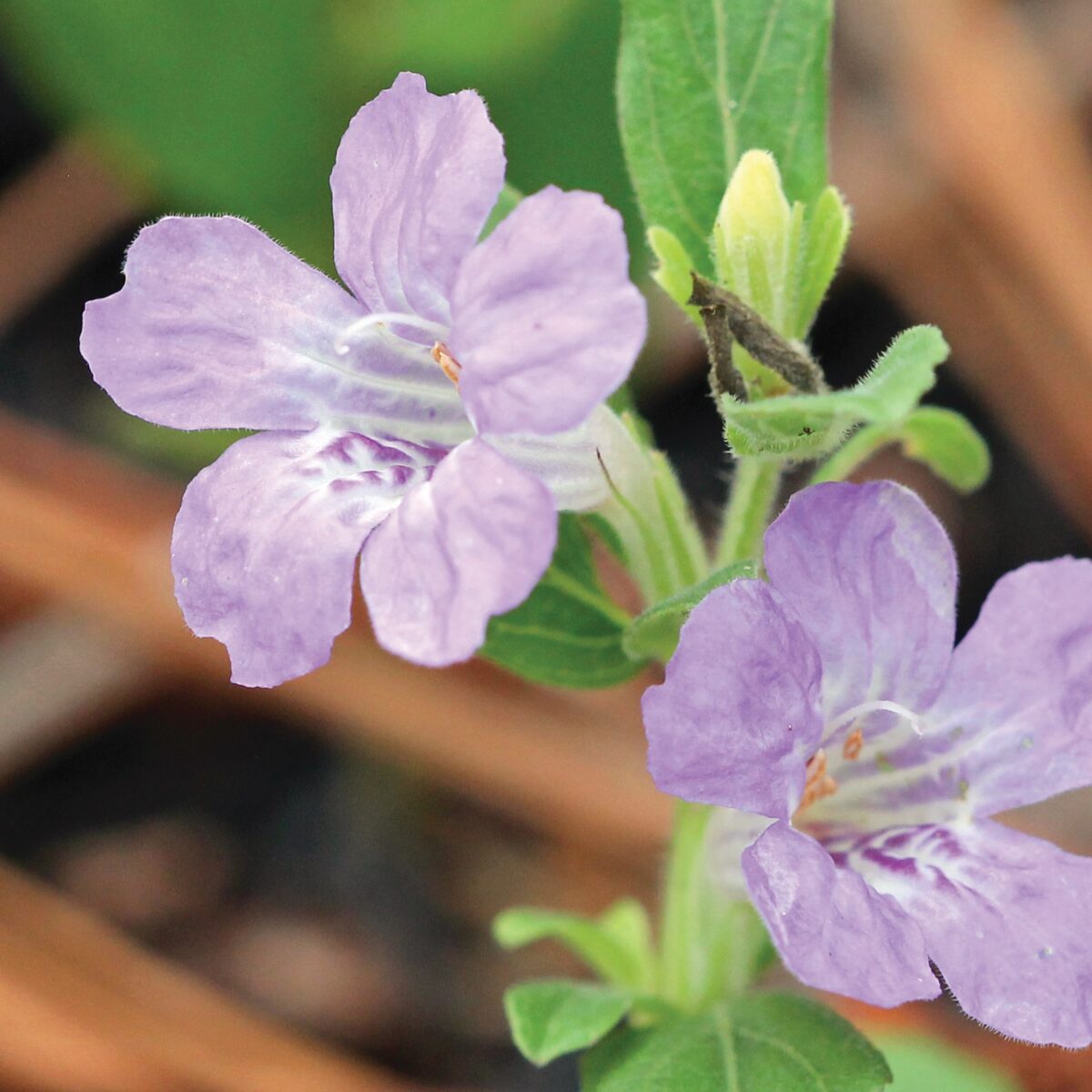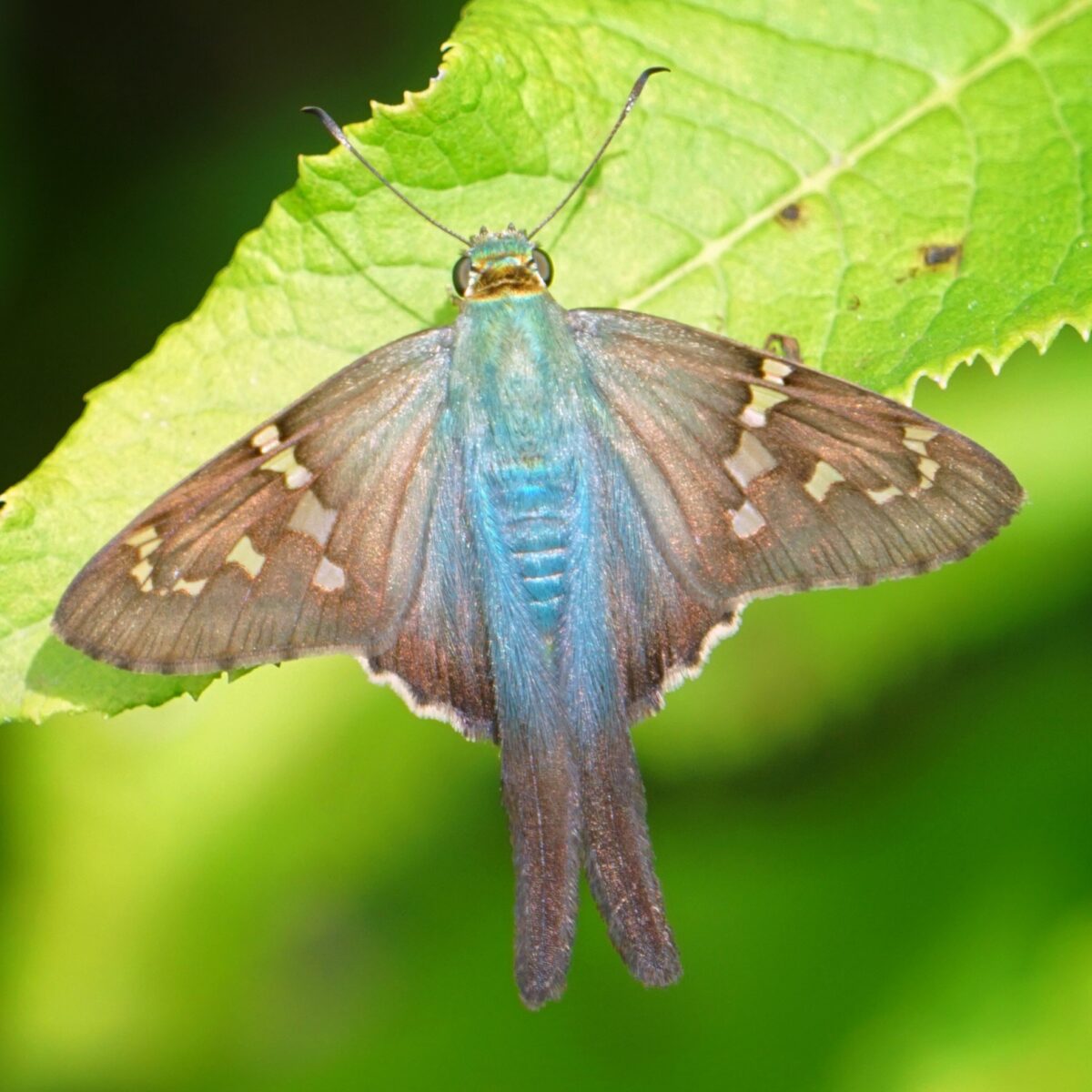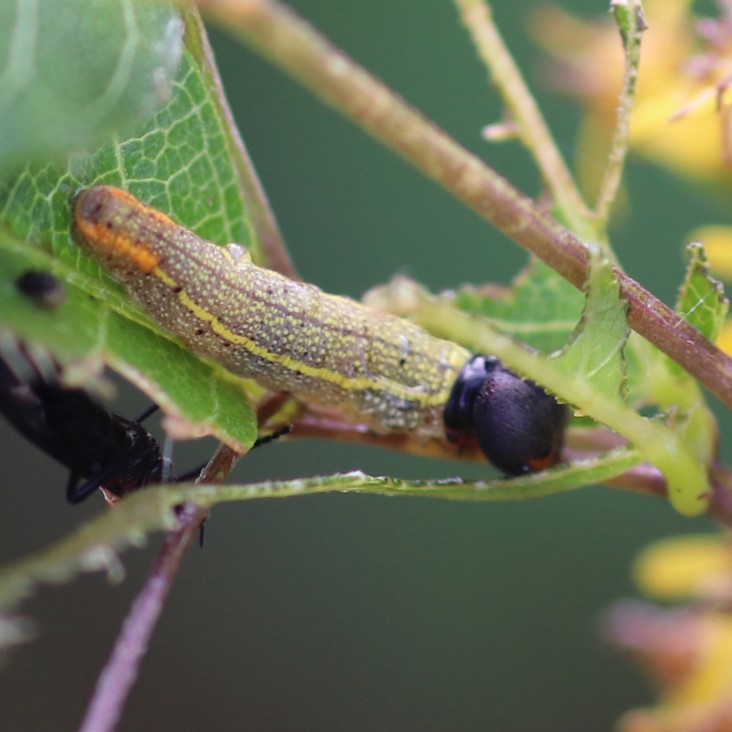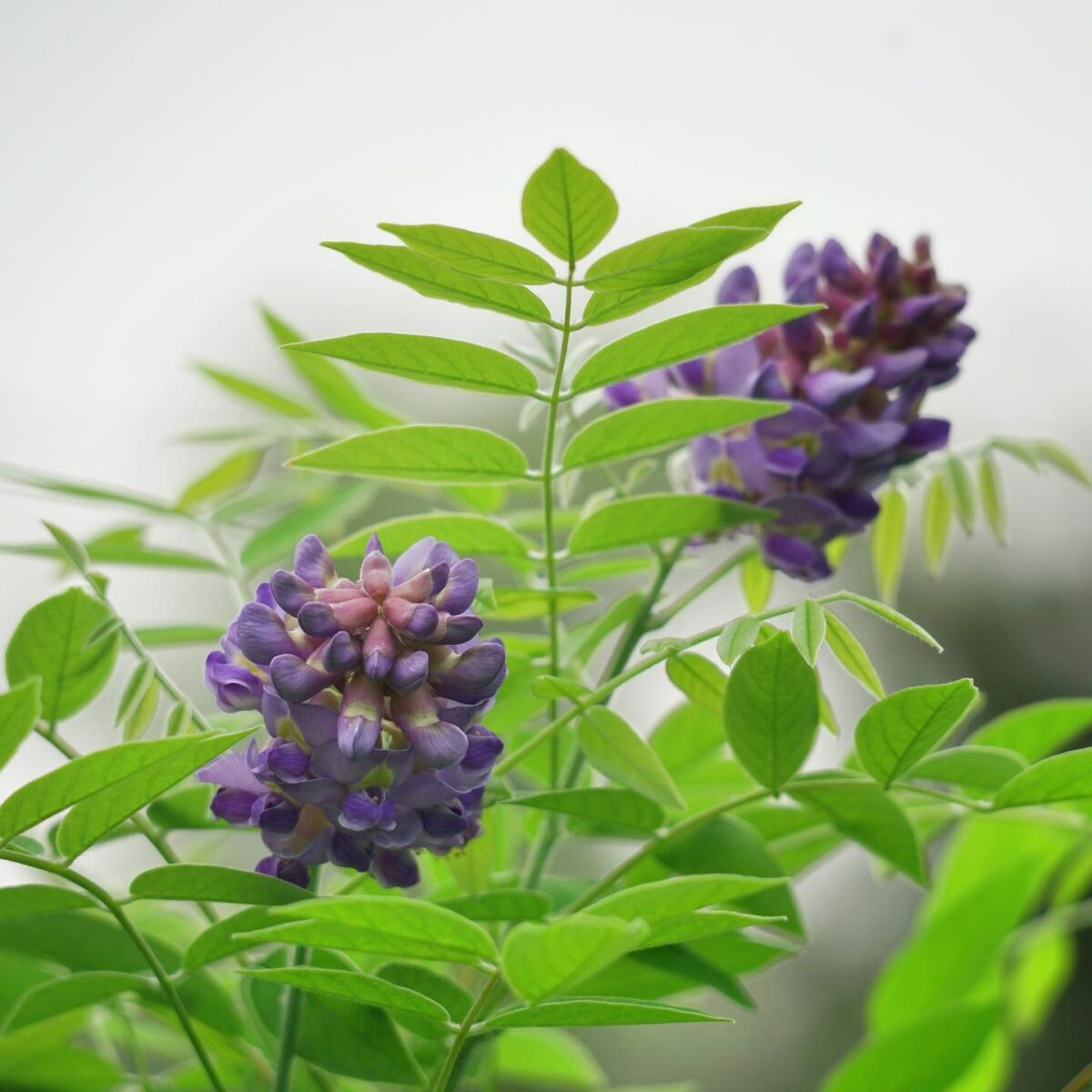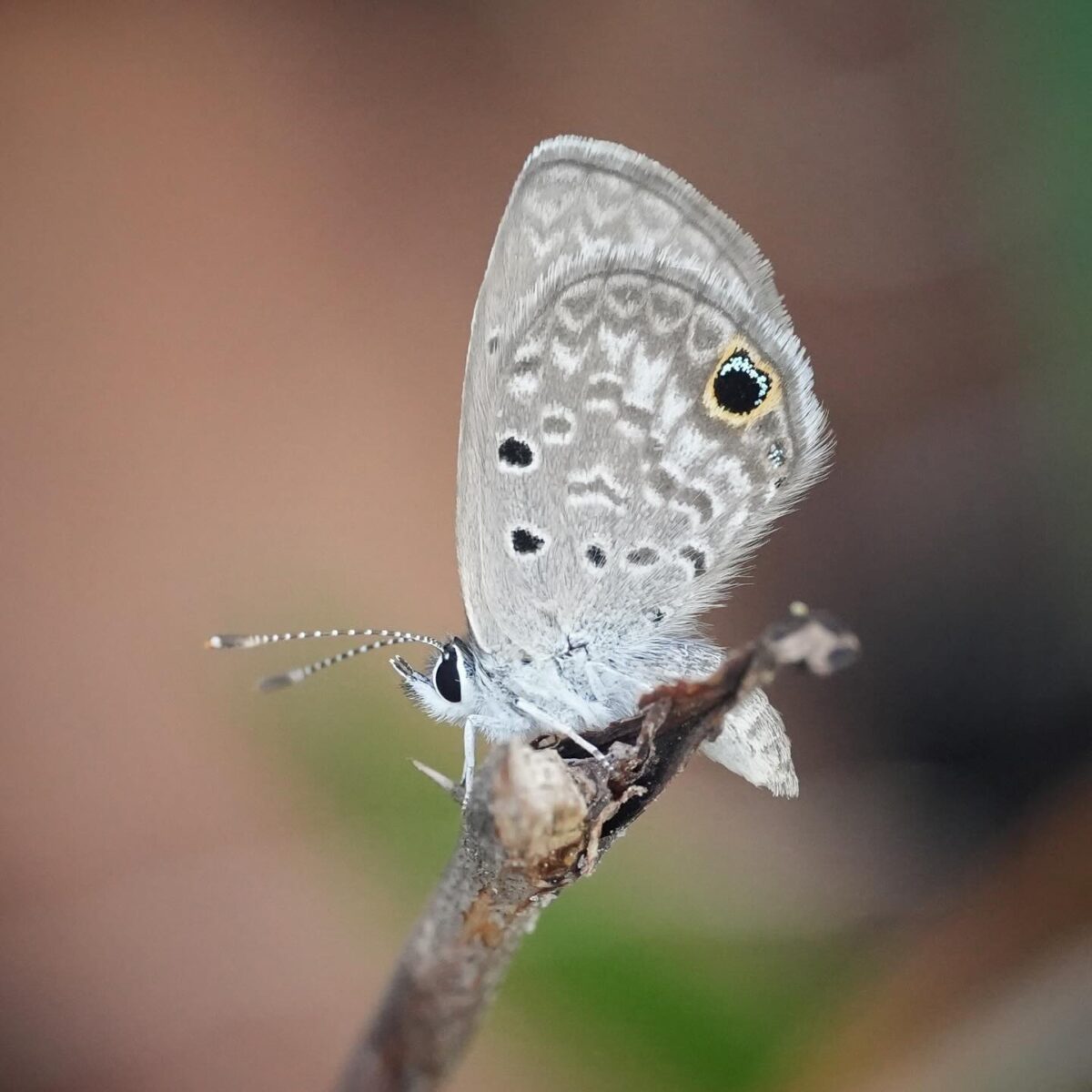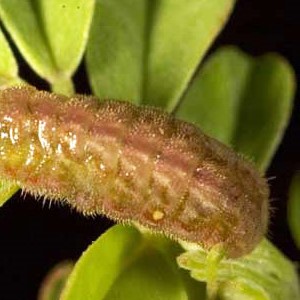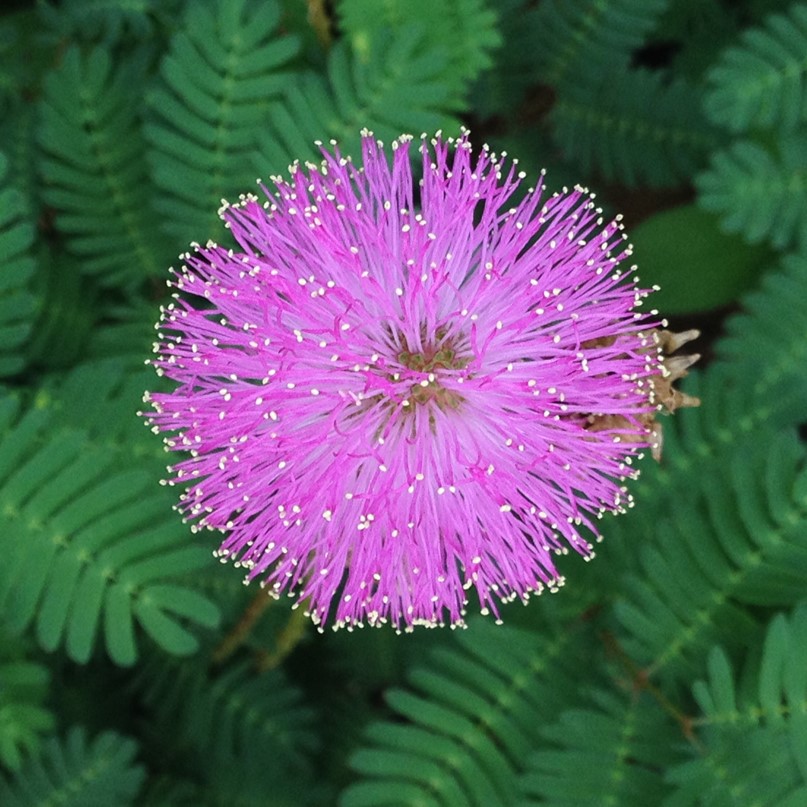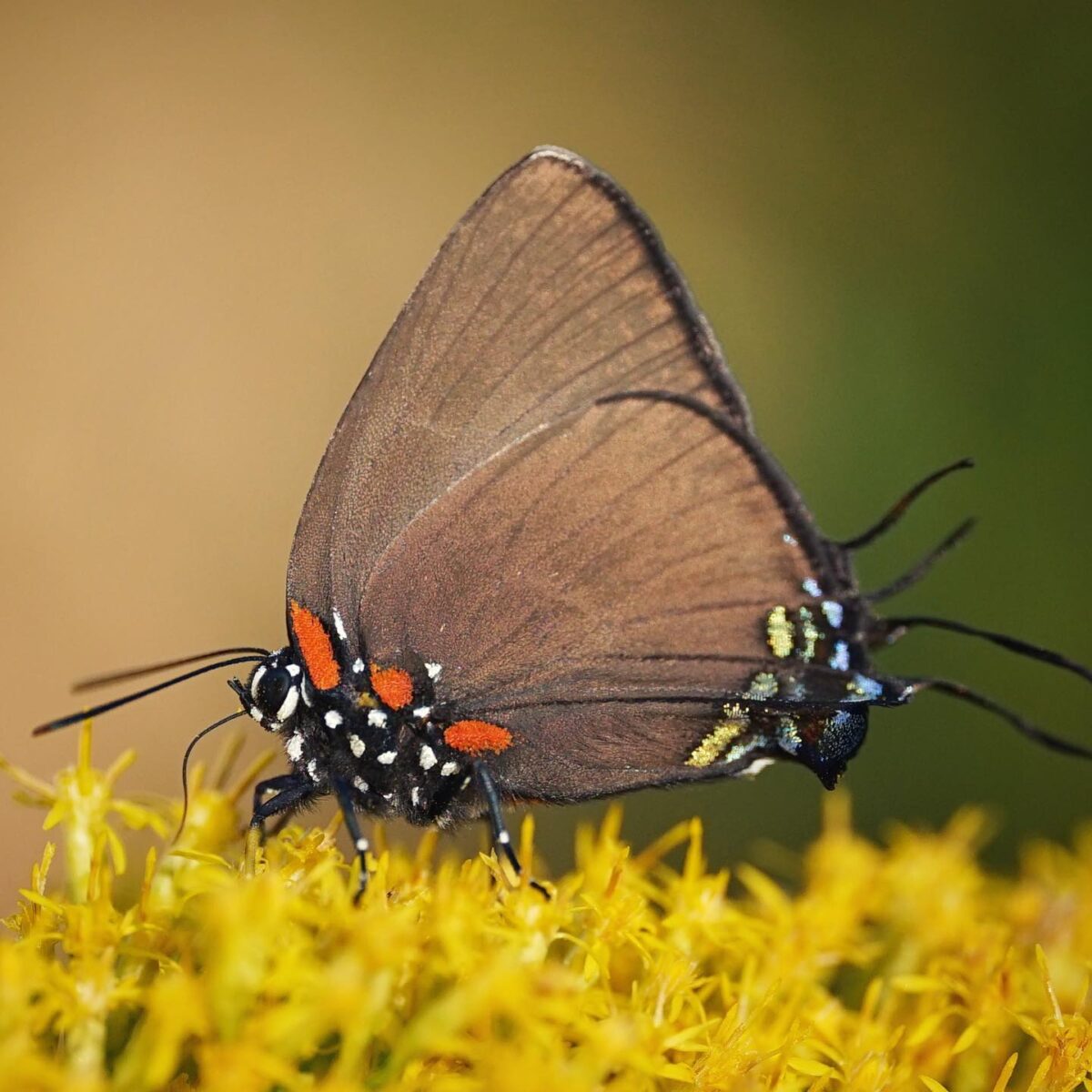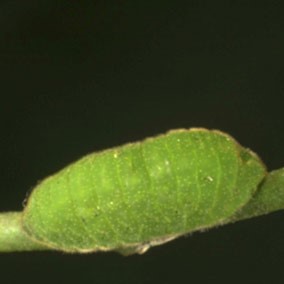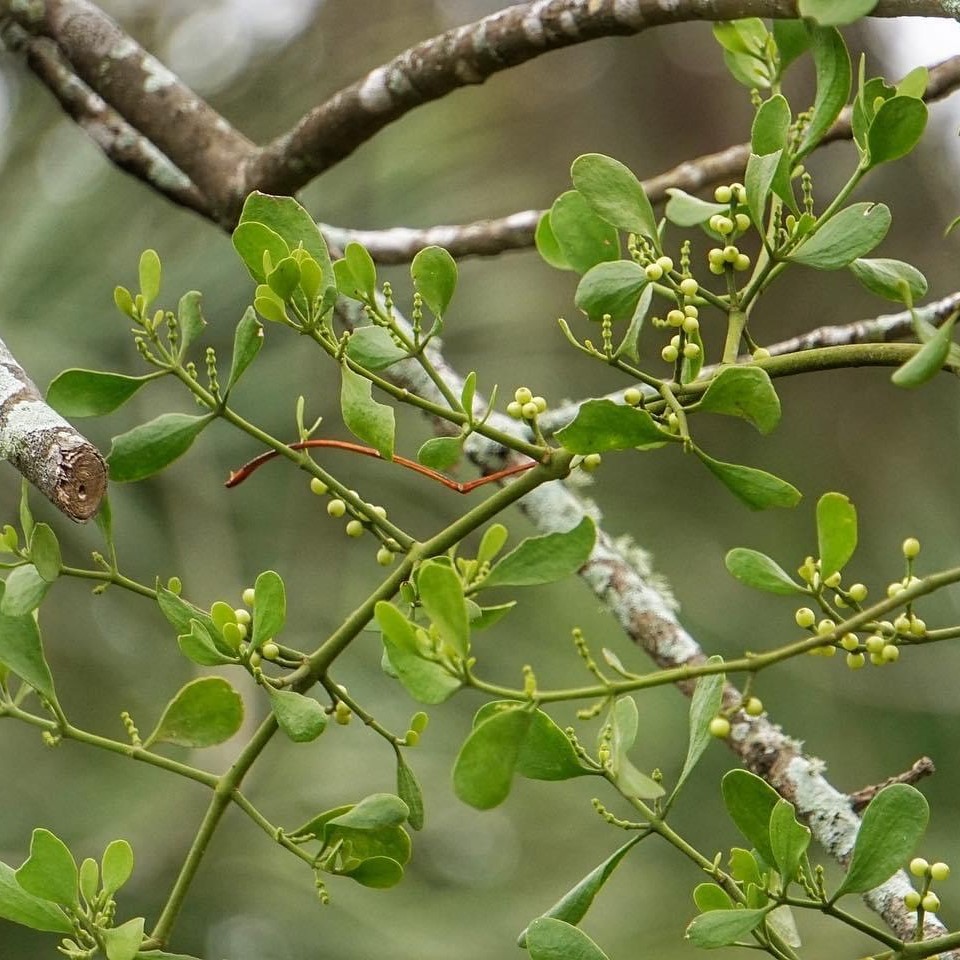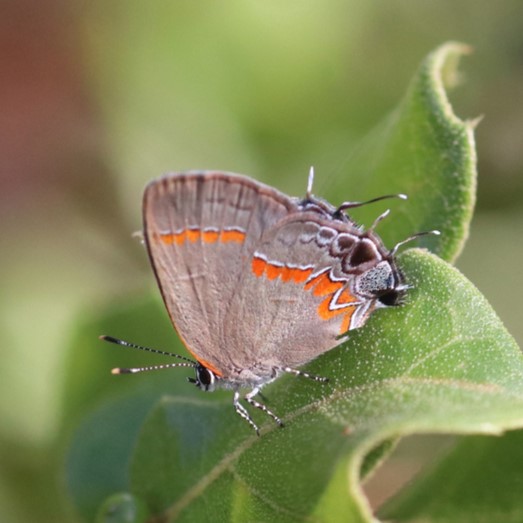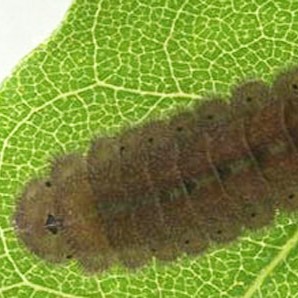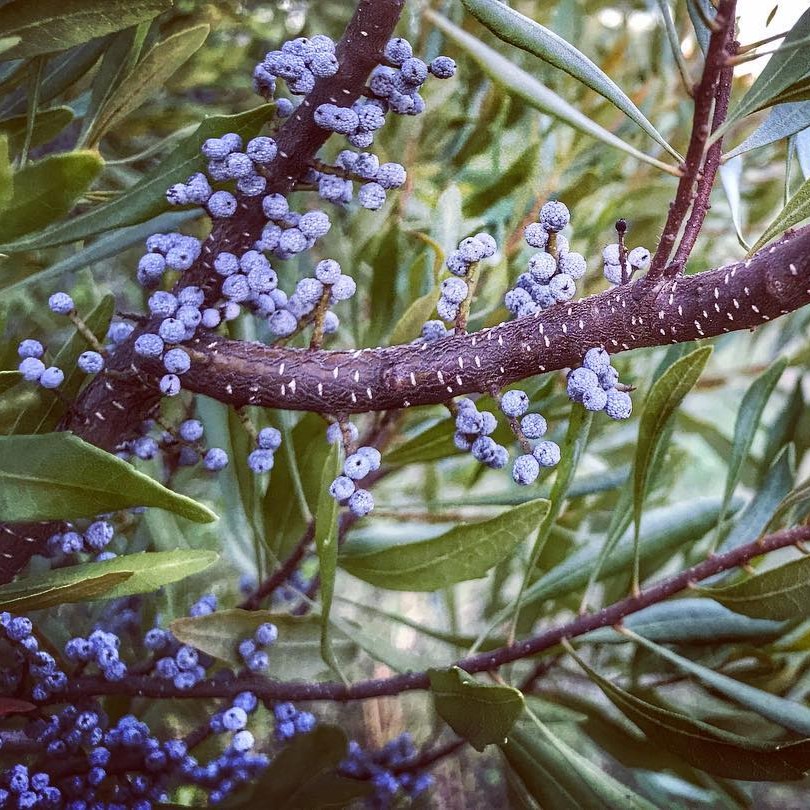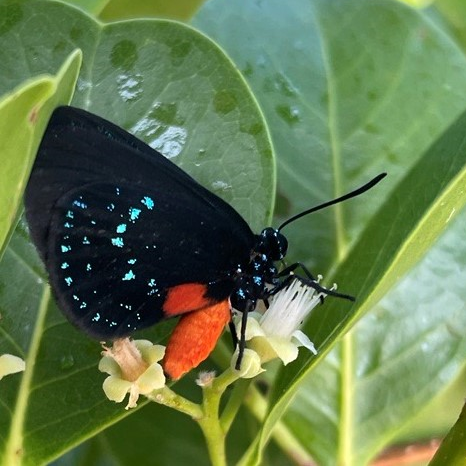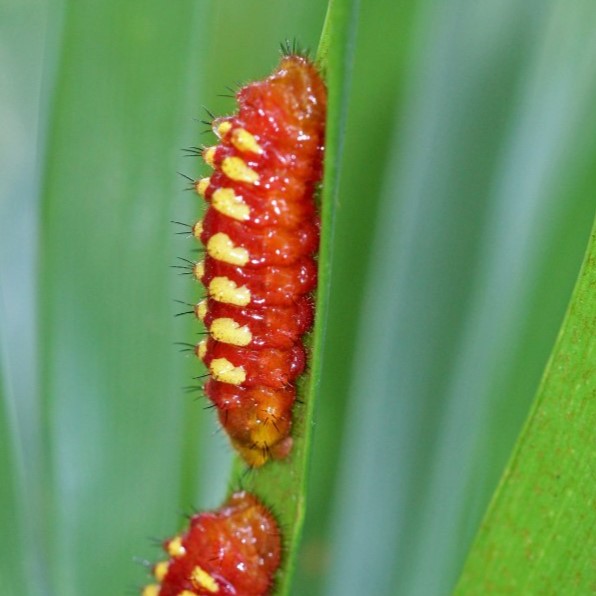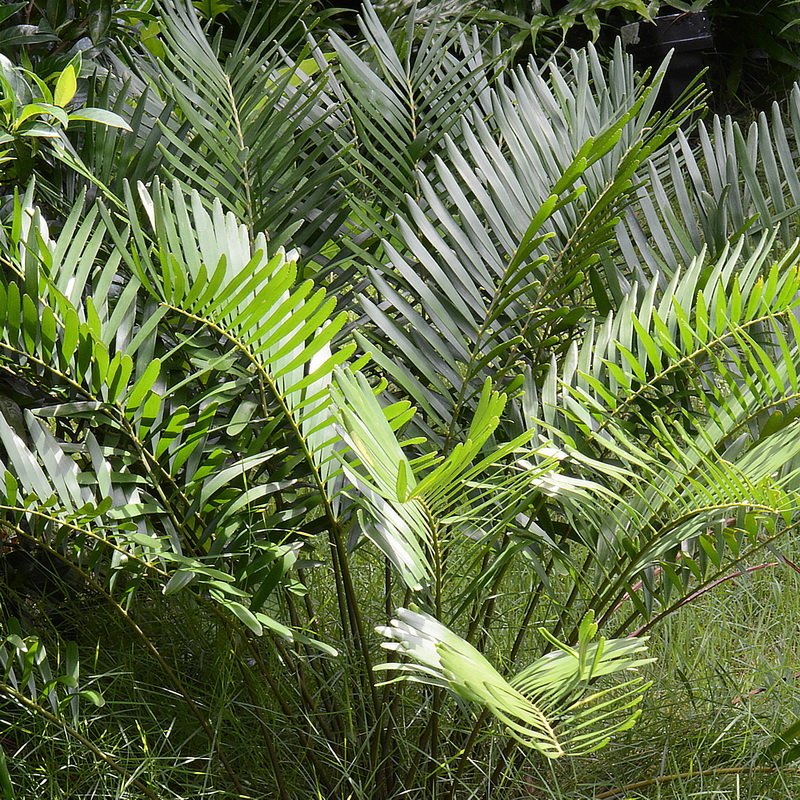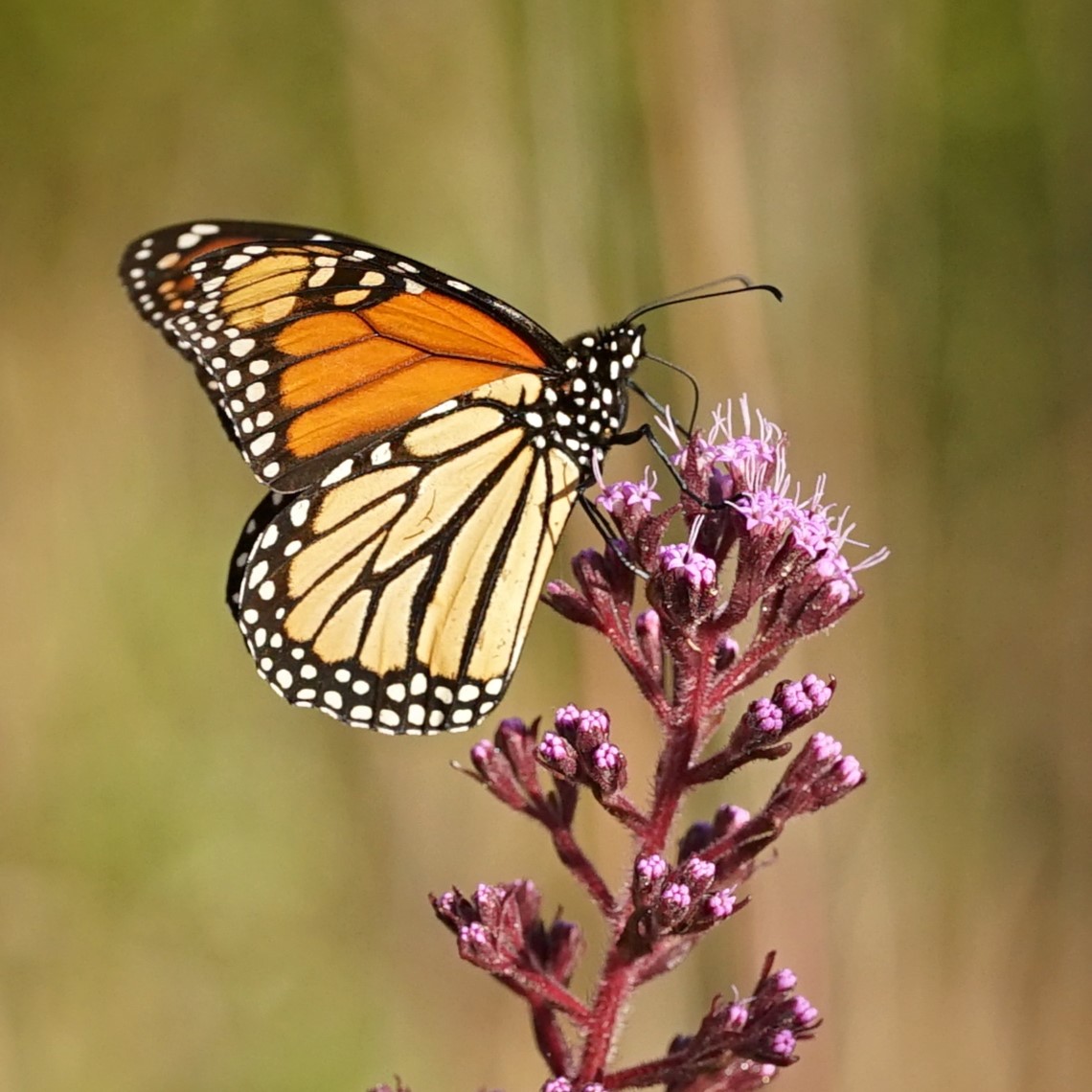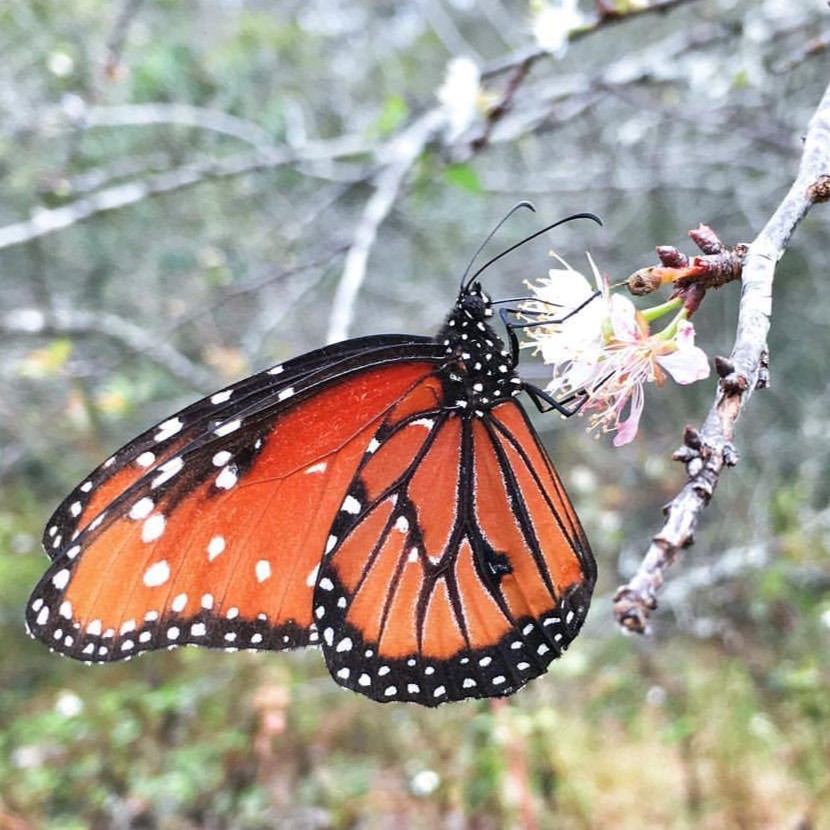Bring on the Butterflies!
Pictured above: Black swallowtail (Papilio polyxenes) on ironweed (Vernonia sp.) by Emily Bell
Butterflies are perhaps the most universally loved insect — their beauty and grace captivates us and their presence brings us joy. Ecologically, butterflies are also incredibly important! Perhaps most well known as pollinators, they are actually quite inefficient at this task. Unlike bees, they don’t tend to seek out pollen or have any specialized features for pollination. Despite this, they can’t be discounted as critical to plant pollination. Butterflies are abundant in a healthy landscape and can visit a very high volume of flowers. When a butterfly stops to sip nectar, it unintentionally picks up pollen on its body and transfers it among flowers. Butterflies and their caterpillars also have a vital role in the food chain as a critical food source for birds and other insectivorous animals. Ecologists often consider butterflies an indicator of healthy ecosystems.
Unfortunately, like many insects, butterfly populations are in decline, primarily due to habitat loss. Creating habitat in our landscapes can help fill the void between fragmented natural habitats and provide stepping stones in a pollinator pathway for butterflies to reach other parks, natural areas and roadside wildflowers.
Butterflies in Florida
Here in Florida, our wealth of native wildflower diversity supports a wonderful array of butterflies. More than 170 species are considered native, with around 40 of those being endemic or nearly endemic. Sixty-seven of our butterfly species are considered rare; data on these species is maintained by the Florida Natural Areas Inventory.
What butterflies need
There are a few key components to keep in mind when gardening for butterflies:
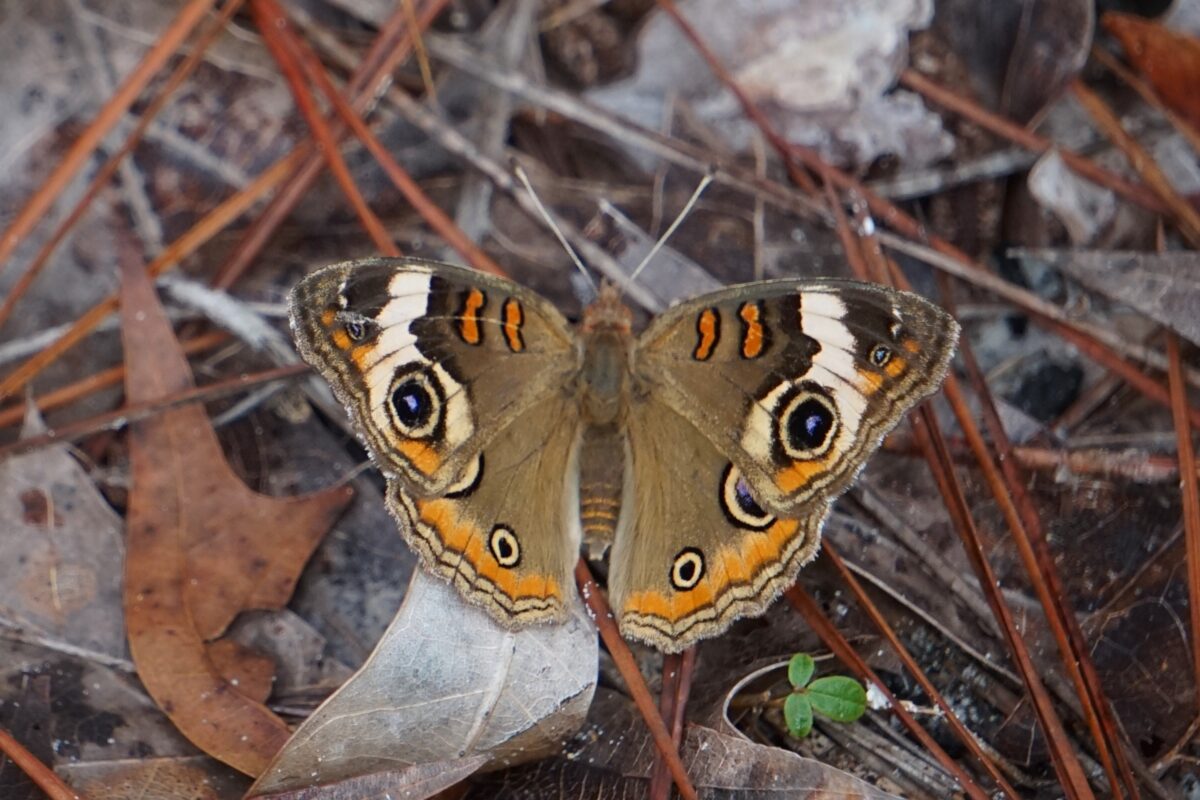
- Utilize regionally appropriate native plants of different sizes and structures to create spaces for butterflies to both feed and rest. Brush piles and other natural features can also provide shelter for butterflies and places for caterpillars to pupate.
- Provide native wildflower nectar sources for adult butterflies. Butterflies are attracted to bright blooms. Consider incorporating a variety of wildflowers to have flowers in bloom from early spring through fall. Our plant selection guide can help you find the right plants for your landscape across the seasons.
- Provide native larval host plants for female butterflies to lay eggs on and support the caterpillars.
- A consistent clean water source can also be helpful for butterflies to hydrate and thermoregulate.
Note: Providing good habitat for butterflies will likely support many other pollinators, birds and other wildlife. It is natural and actually a sign of a healthy food web for predation to occur on both butterflies and caterpillars.
New to native plant gardening? Learn more here! Find native plants to purchase in your area from www.PlantRealFlorida.org.
20+ butterflies to plant for
We support a wholistic approach to butterfly gardening by creating habitat through the use of regionally appropriate native plants and balancing the importance of both nectar sources and larval host plants. While nectar sources are often common across many butterfly species, larval hosts are specific to each species.
We have compiled a list of 20+ butterflies whose larval host plants are generally suitable for urban butterfly gardens and also either commercially available or possibly even already volunteering in your yard.
Zebra longwing (Heliconius charithonia) – Florida’s state butterfly
- Florida distribution: Statewide, most common throughout the peninsula
- Larval host plants: Native flowering vines in the Passiflora genus including: Purple passionflower (Passiflora incarnata), Yellow passionflower (Passiflora lutea) and Corkystem passionflower (Passiflora suberosa).
- CAUTION: There are many non-native Passiflora varieties readily available at big box stores and garden centers. These are not recommended both because some are toxic to our native butterflies and because they have often been treated with harmful insecticides.
Gulf fritillary (Agraulis vanillae)
- Florida distribution: Statewide
- Larval host plants: Native flowering vines in the Passiflora genus including: Purple passionflower (Passiflora incarnata), Yellow passionflower (Passiflora lutea) and Corkystem passionflower (Passiflora suberosa).
- CAUTION: There are many non-native Passiflora varieties readily available at big box stores and garden centers. These are not recommended both because some are toxic to our native butterflies and because they have often been treated with harmful insecticides.
Giant swallowtail (Papilio cresphontes)
- Florida distribution: Statewide
- Larval host plants: Native shrubs to small trees in the Rutaceae (Citrus) Family including: Hercules club (Zanthoxylum clava-herculis), Wild lime (Zanthoxylum fagara) and Wafer ash (Ptelea trifoliata).
Eastern tiger swallowtail (Papilio glaucus)
- Florida distribution: Statewide
- Larval host plants: While there are many native trees across seven families that are documented larval hosts, the favored host in peninsular Florida and only host utilized in South Florida is the Sweetbay (Magnolia virginiana). Other suitable trees sometimes utilized in North Florida include Tulip poplar (Liriodendron tulipifera), Black cherry (Prunus serotina) and Pop ash (Fraxinus caroliniana).
Black swallowtail (Papilio polyxenes)
- Florida distribution: Statewide
- Larval host plants: Herbaceous wildflowers to shrubs in the Apiaceae (Carrot) family. Three very common native plants that are regularly utilized by Black swallowtails are Mock bishopsweed (Ptilimnium capillaceum), Water cowbane (Tiedemannia filiformis) and Spotted water hemlock (Cicuta maculata). While none of these are widely available commercially, they often grow along the edges of retention ponds and in wet ditches and can volunteer in other moist to wet landscapes. Allowing them to remain in these areas will support Black swallowtail reproduction.
Zebra swallowtail (Eurytides marcellus)
- Florida distribution: Statewide
- Larval host plants: Native shrubs to small trees in the Asimina genus. Commonly referred to as Pawpaws, Florida has 12 native Asimina species, a number of which are becoming increasingly common in cultivation including Common pawpaw (Asimina triloba), Bigflower pawpaw (Asimina obovata) and Smallflower pawpaw (Asimina parviflora).
- NOTE: Pawpaws can be somewhat difficult to grow and different species are also highly regionalized across the state. Be sure that you select the best species for your landscape conditions and local area
White peacock (Anartia jatrophae)
- Florida distribution: Statewide, but predominantly in peninsular Florida
- Larval host plants: Larval host plants: Herb-of-grace (Bacopa monnieri) and Frogfruit (Phyla nodiflora). These low-growing herbaceous wildflowers can be used as groundcovers and turf alternatives. Both are commercially available and may even already exist in your landscape.
Great Southern white (Ascia monuste)
- Florida distribution: Uncommon in North Florida, becoming common into Central and South Florida
- Larval host plants: Saltwort (Batis maritima), Coastal searocket (Cakile lanceolata) and Virginia pepperweed (Lepidium virginicum). Saltwort and Coastal searocket are common in coastal environments, with Saltwort readily colonizing estuarine environments and Coastal searocket growing in sand dunes and on beaches. Virginia pepperweed is a very common landscape volunteer across the state and is often regarded as a weed to be mowed or pulled. Making room for this petite wildflower is good for these butterflies as well as other pollinators.
Cloudless sulphur (Phoebis sennae)
- Florida distribution: Statewide
- Larval host plants: Various native species in the Chamaecrista and Senna genera. Partridge pea (Chamaecrista fasciculata), Sensitive pea (Chamaecrista nictitans), Privet senna (Senna ligustrina) and Chapman’s wild sensitive plant (Senna mexicana var. chapmanii) are all great commercially available options.
- CAUTION: Many non-native Senna species are sold commercially. In particular, Christmas senna (S. pendula), or Butterfly senna, is often recommended for butterfly gardens. However, the Florida Invasive Species Council lists it as a Category I invasive species known to alter native plant communities. It should be avoided.
Sleepy orange (Abaeis nicippe)
- Florida distribution: Statewide
- Larval host plants: Various native species in the Chamaecrista and Senna genera. Recommendations are the same as listed above for the Cloudless sulphur.
- CAUTION: Many non-native Senna species are sold commercially. In particular, Christmas senna (S. pendula), or Butterfly senna, is often recommended for butterfly gardens. However, the Florida Invasive Species Council lists it as a Category I invasive species known to alter native plant communities. It should be avoided.
Little metalmark (Calephelis virginiensis)
- Florida distribution: Statewide
- Larval host plants: Various herbaceous wildflowers in the Asteraceae (Aster) family including Purple or Yellow thistle (Cirsium horridulum) and Climbing hempvine (Mikania scandens), both of which are common in disturbed areas and can volunteer themselves in landscapes. Little metalmarks can also utilize Vanillaleaf (Carphephorus odoratissimus), which is a great addition to a sandy wildflower meadow.
Phaon crescent (Phyciodes phaon)
- Florida distribution: Statewide
- Larval host plants: Frogfruit (Phyla nodiflora), a wonderful groundcover alternative to turf grass and often volunteers in yards.
Red admiral (Vanessa atalanta)
- Florida distribution: Statewide
- Larval host plants: Herbaceous native plants in the Urticaceae (Nettle) family. One of its common hosts is Florida pellitory (Parietaria floridana). It is often considered a weed in urban landscapes, but making a place for it benefits these butterflies.
Common buckeye (Junonia coenia)
- Florida distribution: Statewide
- Larval host plants: A variety of native wildflowers including Frogfruit (Phyla nodiflora) and Oblongleaf twinflower (Dyschoriste oblongifolia), both of which make great groundcovers. They also utilize a common landscape volunteer, Toadflax (Linaria canadensis).
Long-tailed skipper (Urbanus proteus)
- Florida distribution: Statewide
- Larval host plants: A variety of native plants in the Fabaceae (Legume) family including American wisteria (Wisteria americana).
Ceraunus blue (Hemiargus ceraunus)
- Florida distribution: Statewide, most abundant throughout the peninsula
- Larval host plants: A variety of native plants in the Fabaceae (Legume) family including Partridge pea (Chamaecrista fasciculata), Sensitive pea (Chamaecrista nictitans) and Sunshine mimosa (Mimosa strigillosa).
Great purple hairstreak (Atlides halesus)
- Florida distribution: North and Central Florida
- Larval host plants: Oak mistletoe (Phoradendron leucarpum) is the sole larval host for the Great purple hairstreak. Unfortunately, there is a common misconception that Oak mistletoe does lethal damage to its host tree, and homeowners are often encouraged to have it removed. However, not only does this hemiparasitic plant not kill its host, it also has a lot of wildlife value!
Red-banded hairstreak (Calycopis cecrops)
- Florida distribution: Statewide
- Larval host plants: Wax myrtle (Morella cerifera) and Winged sumac (Rhus copallinum), as well as many Oaks (Quercus sp.)
Atala (Eumaeus atala)
- Florida distribution: Central and South Florida, primarily along the coast
- Larval host plant: Coontie (Zamia integrifolia). The Atala is one of the best conservation success stories demonstrating how the choices we make in urban landscapes can make a big difference! Once on the verge of extinction, it is making a tremendous comeback in large part due to the widespread planting of Coontie, a highly adaptable small native shrub.
Monarch (Danaus plexippus), Queen (Danaus gilippus) and Soldier (Danaus eresimus)
- Florida distribution:
- Monarch – Statewide with seasonal migrants in North and Central Florida and a non-migratory population in South Florida
- Queen – Statewide
- Soldier – Central and South Florida
- Larval host plants: Butterflies in the Danaus genus utilize plants in the Apocynaceae (Dogbane) family as larval hosts with a primary preference towards the genus Asclepias (Milkweeds). There is a lot of confusion surrounding the status of Monarch butterflies and the best ways to help them in Florida — read more here.
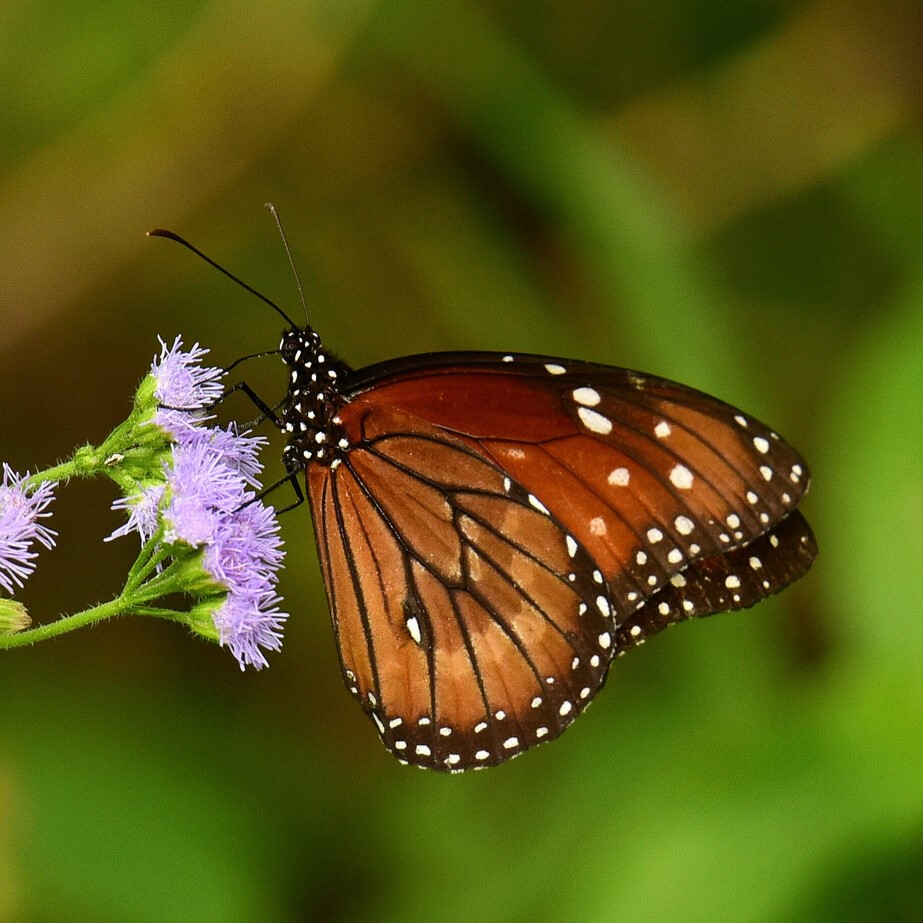
Photo by Rick Cheicante CC BY-NC

